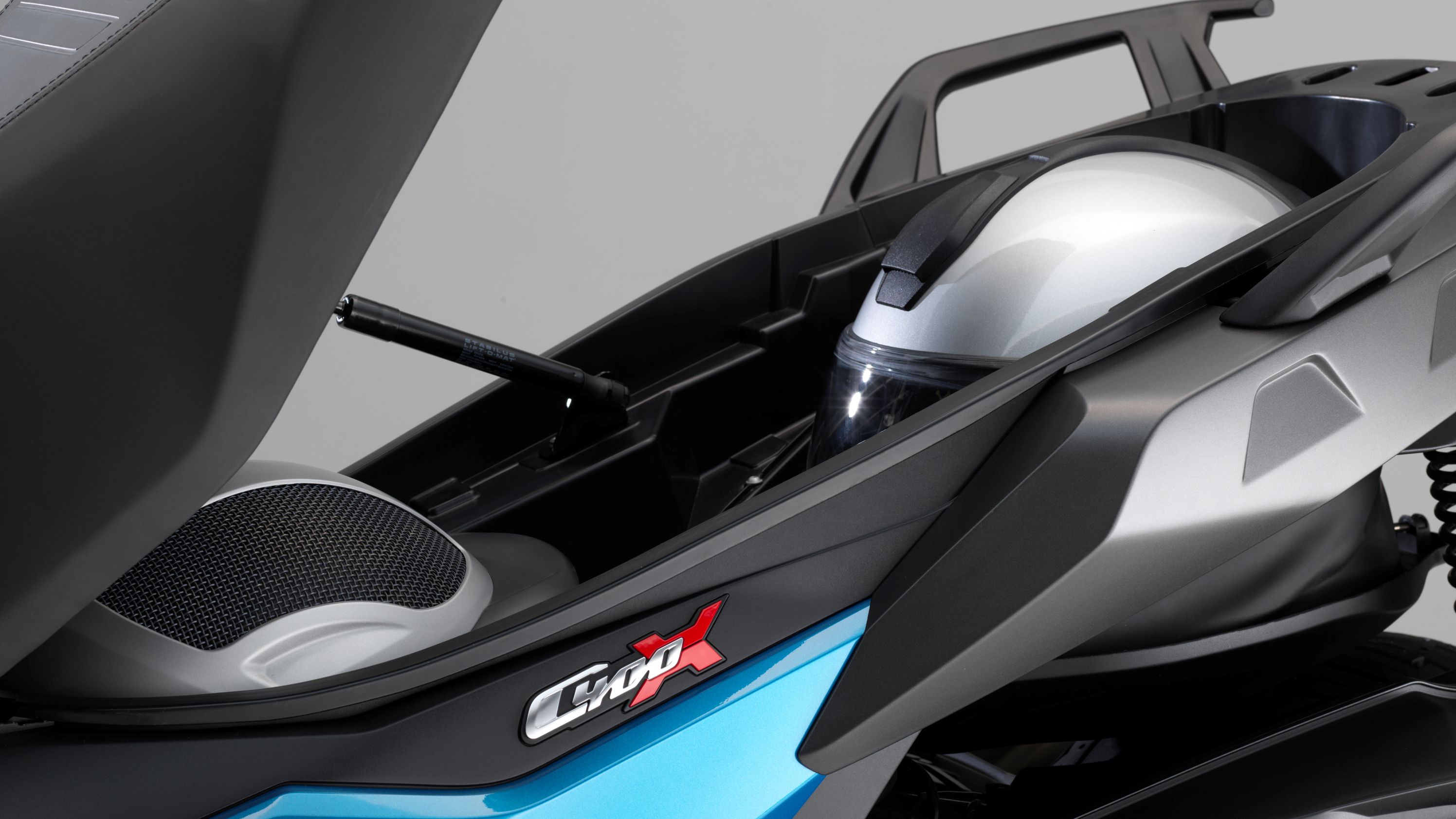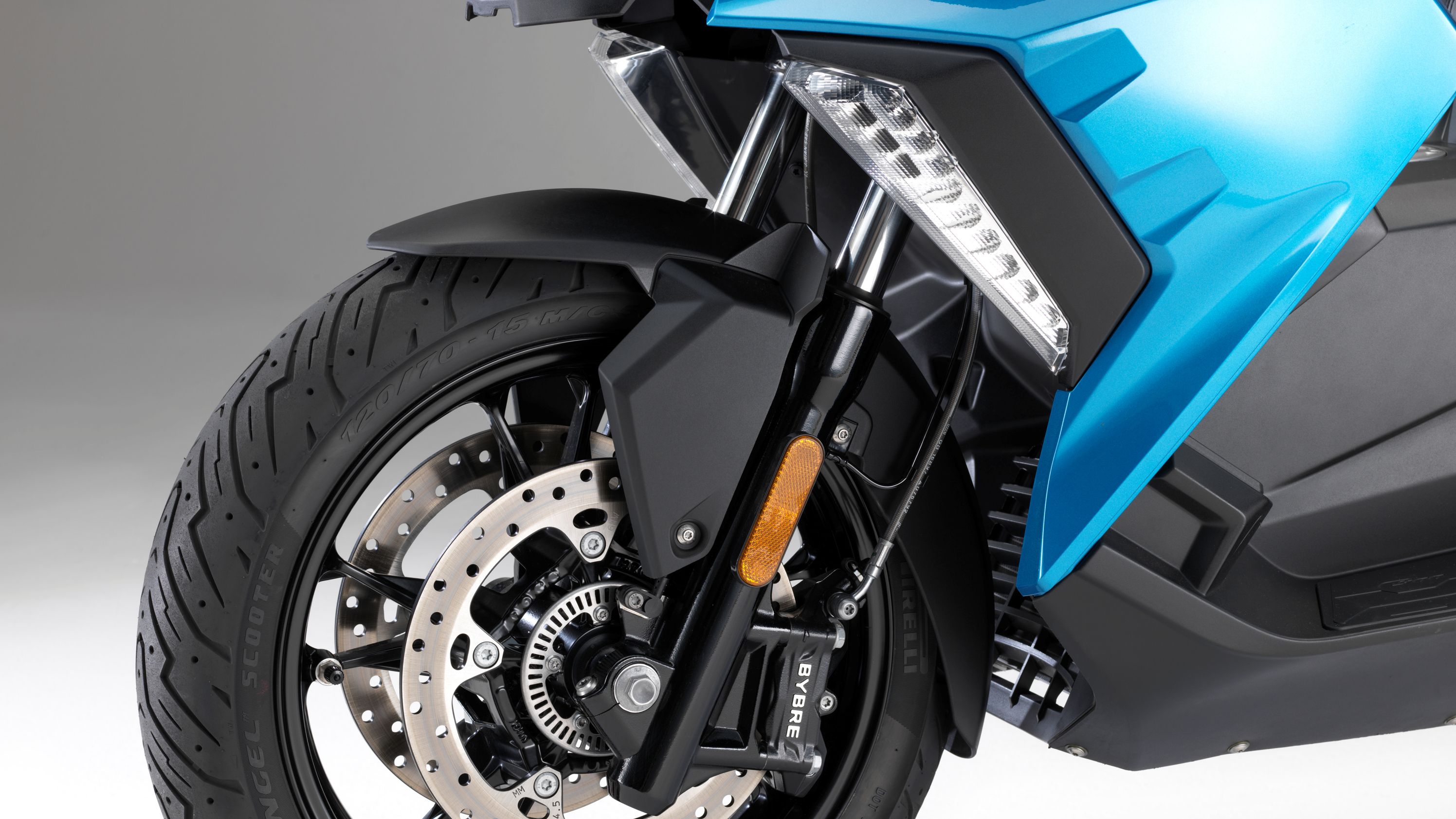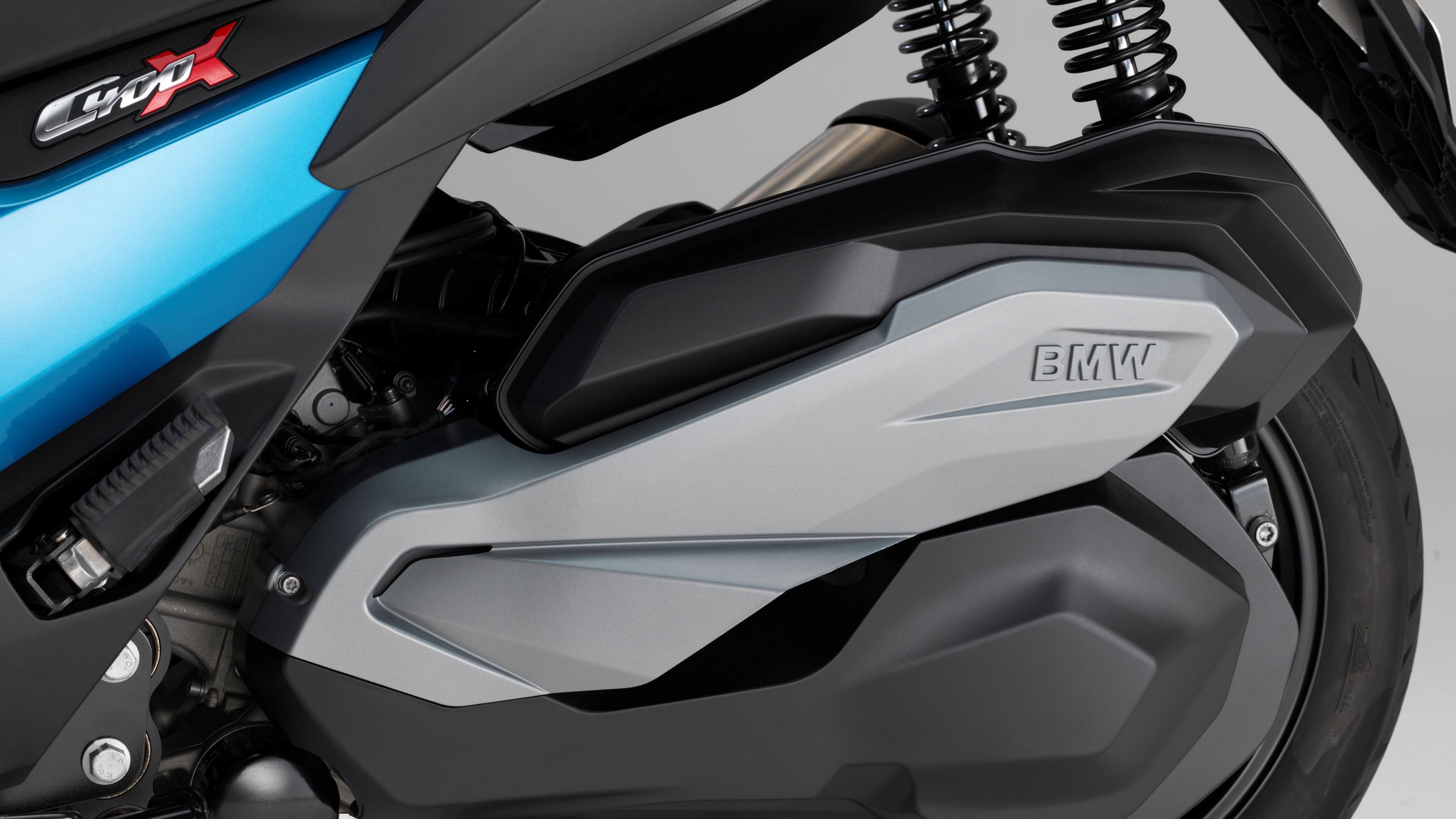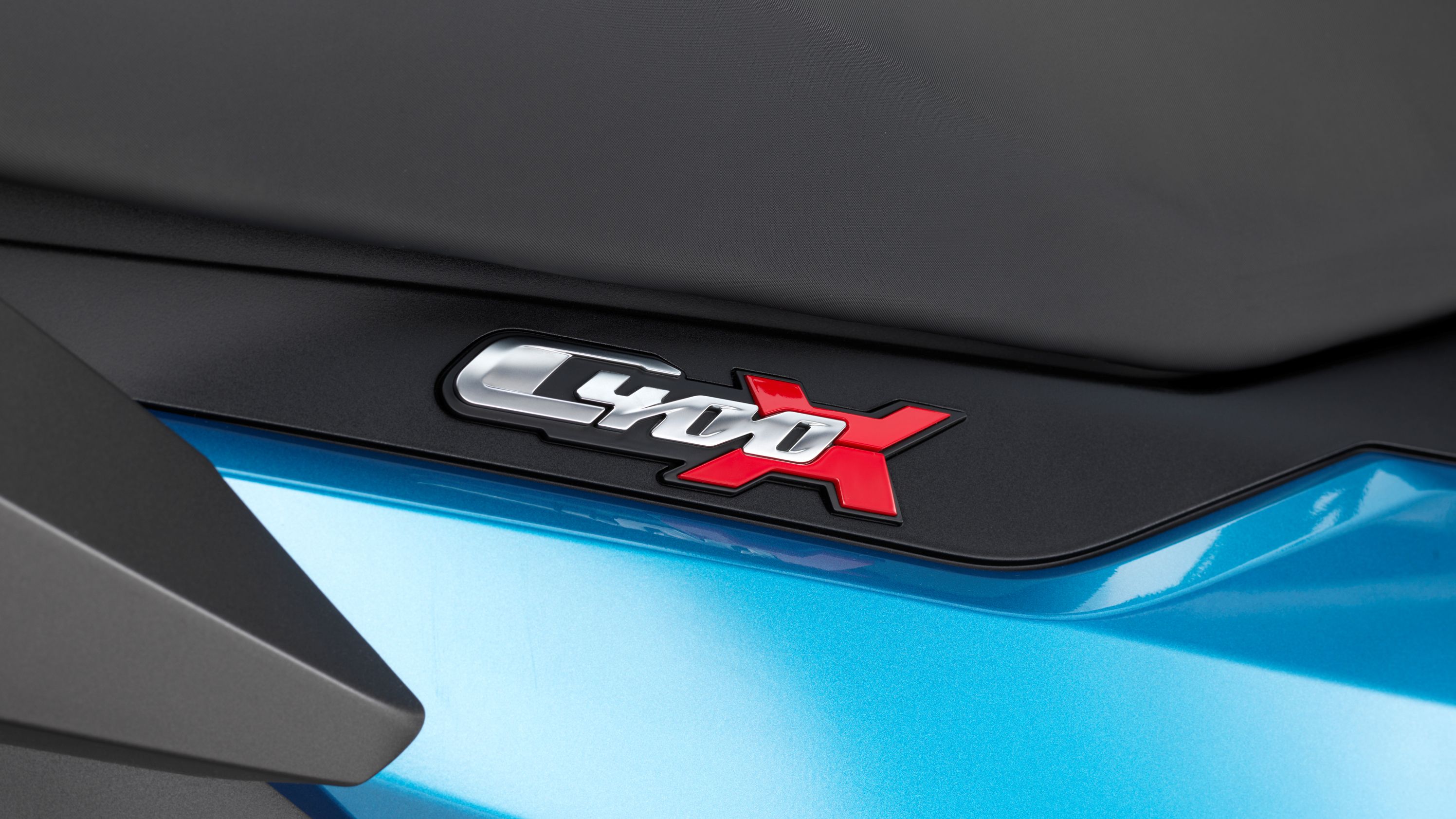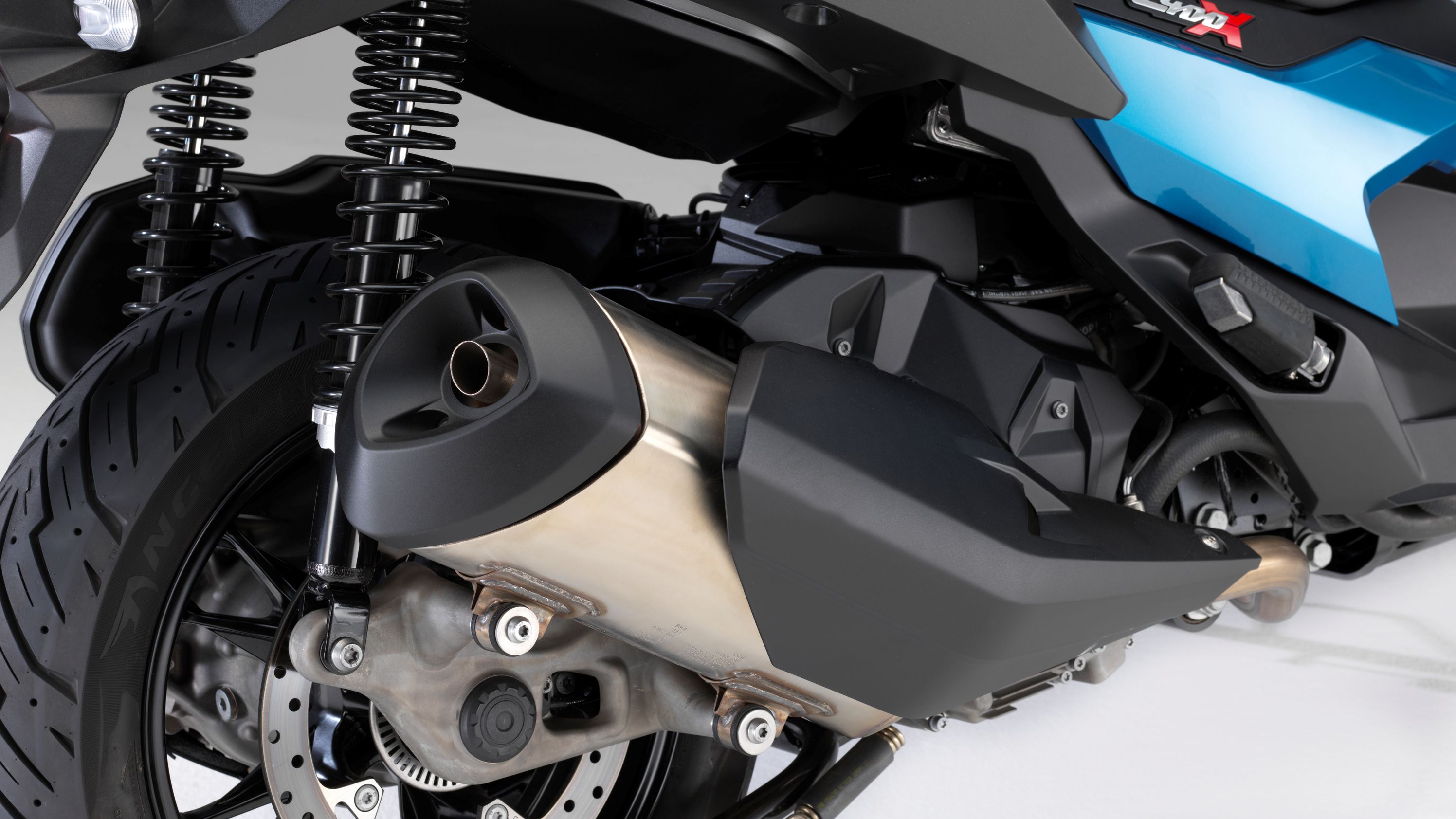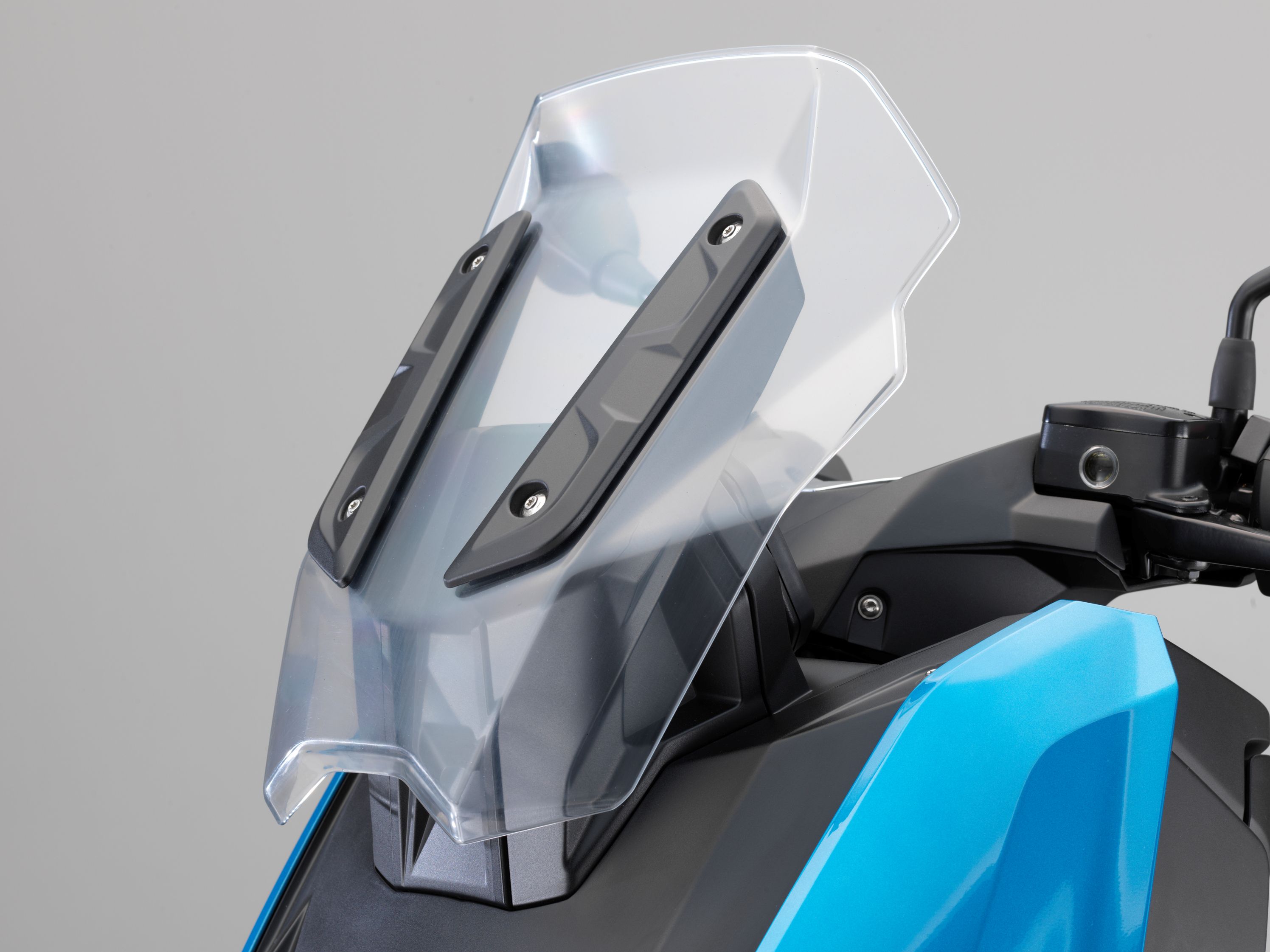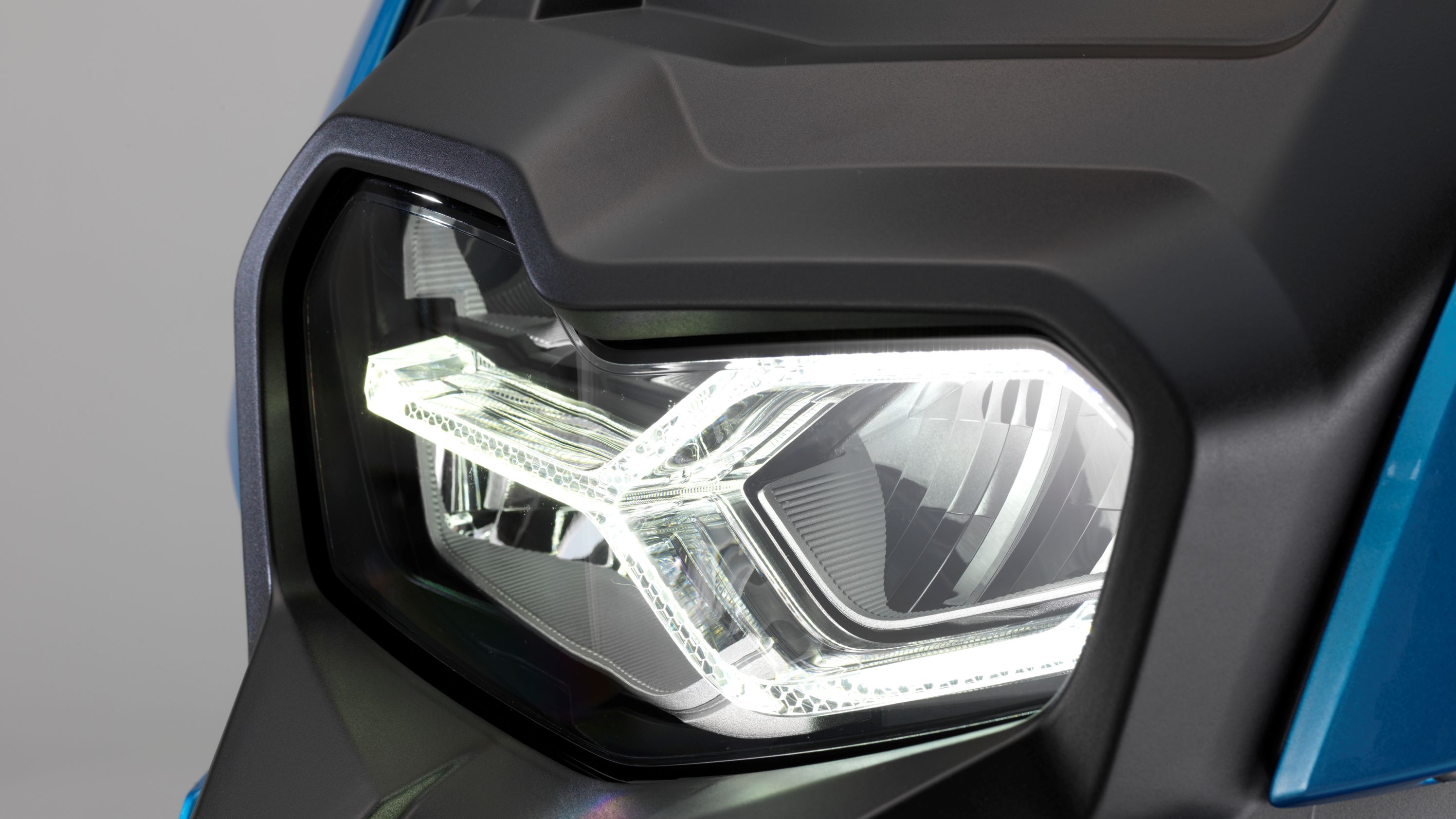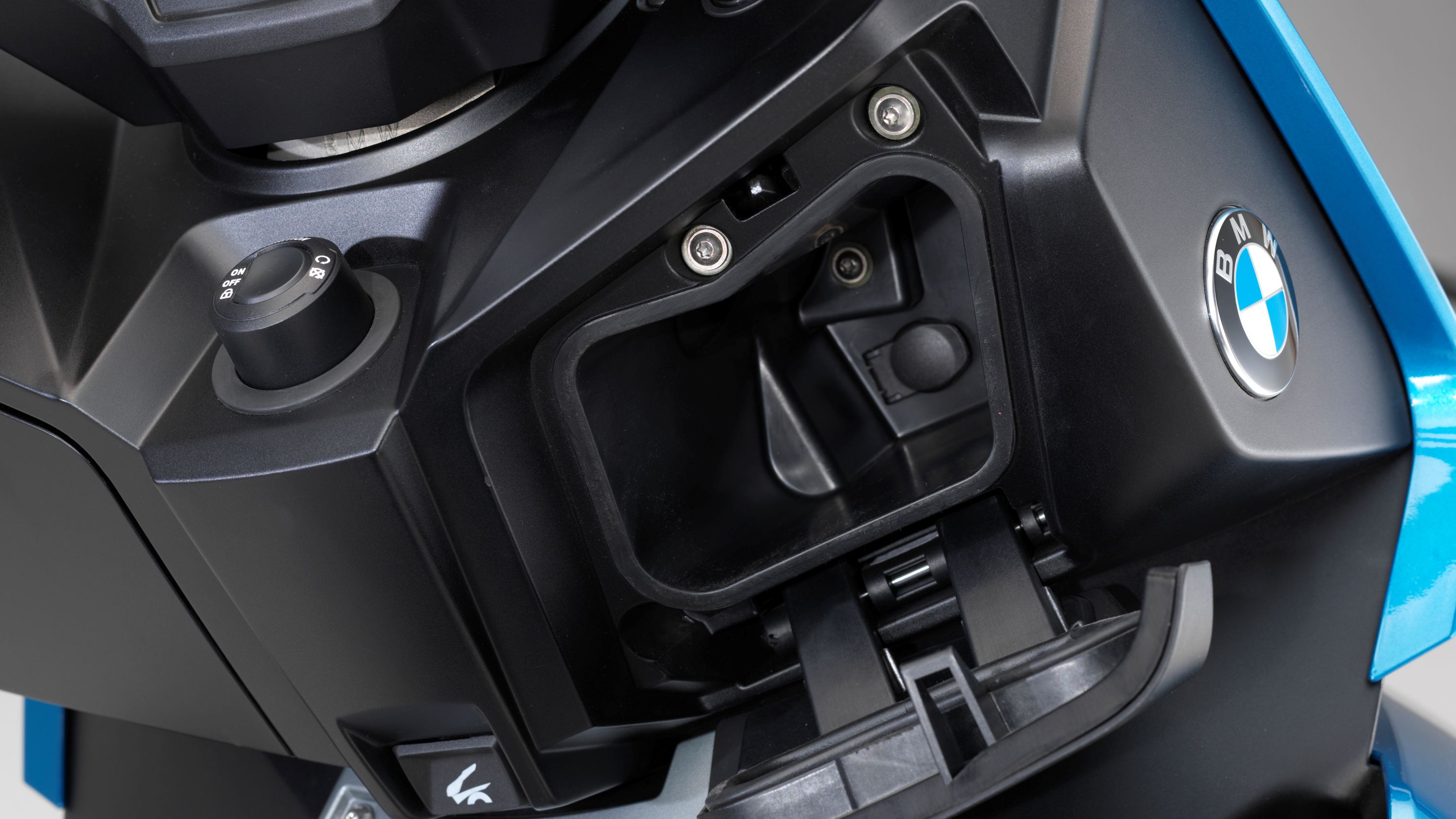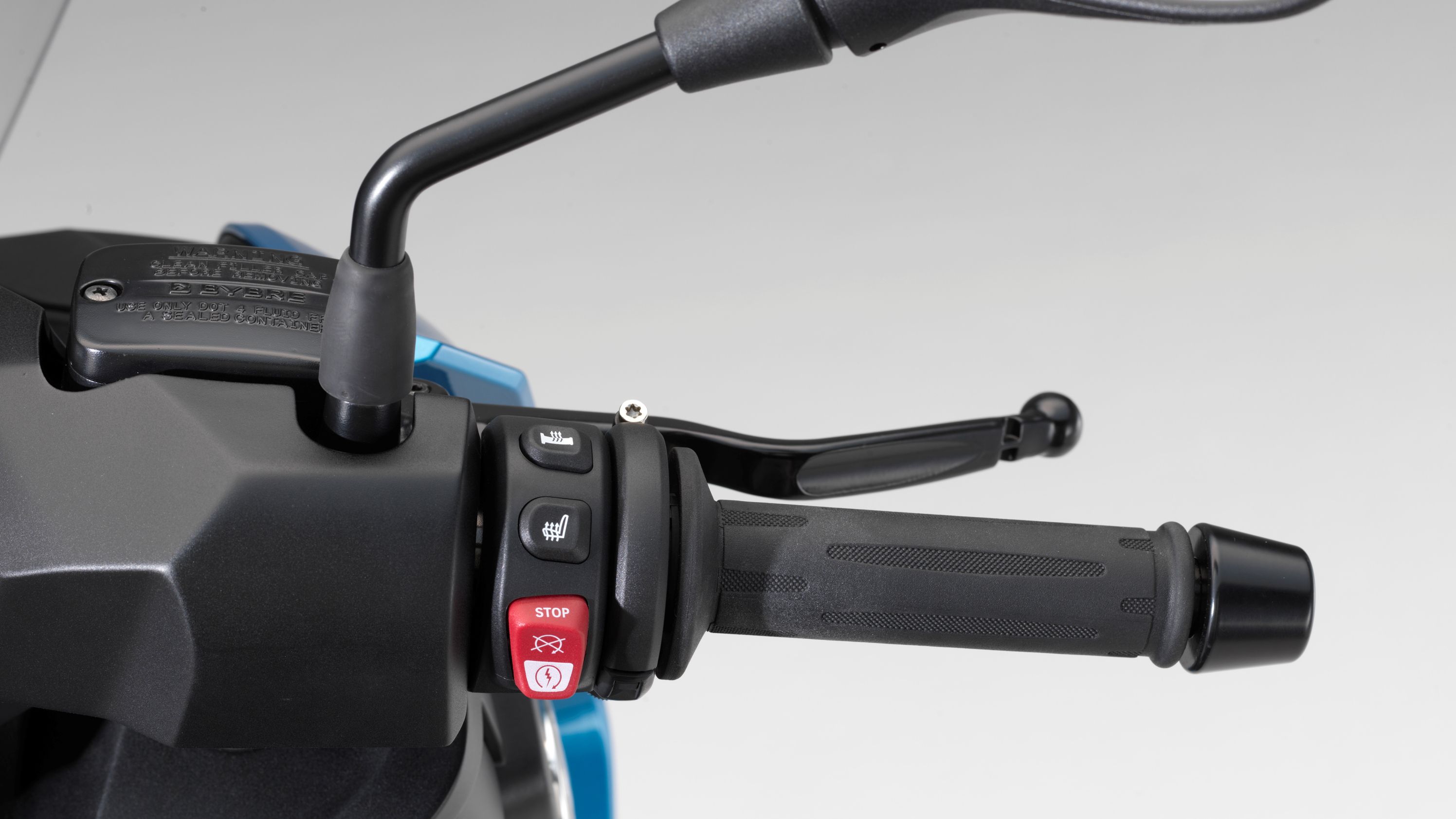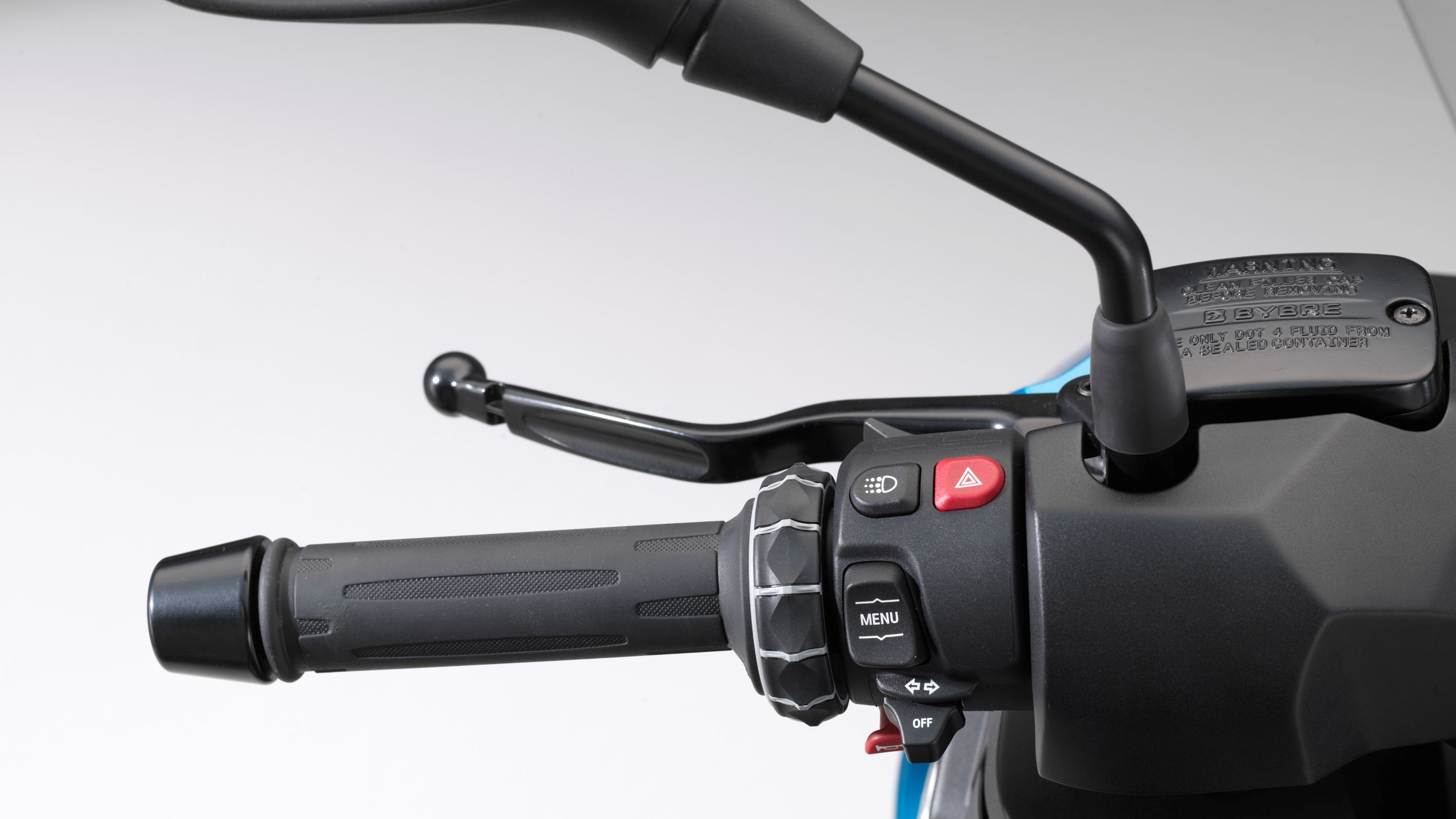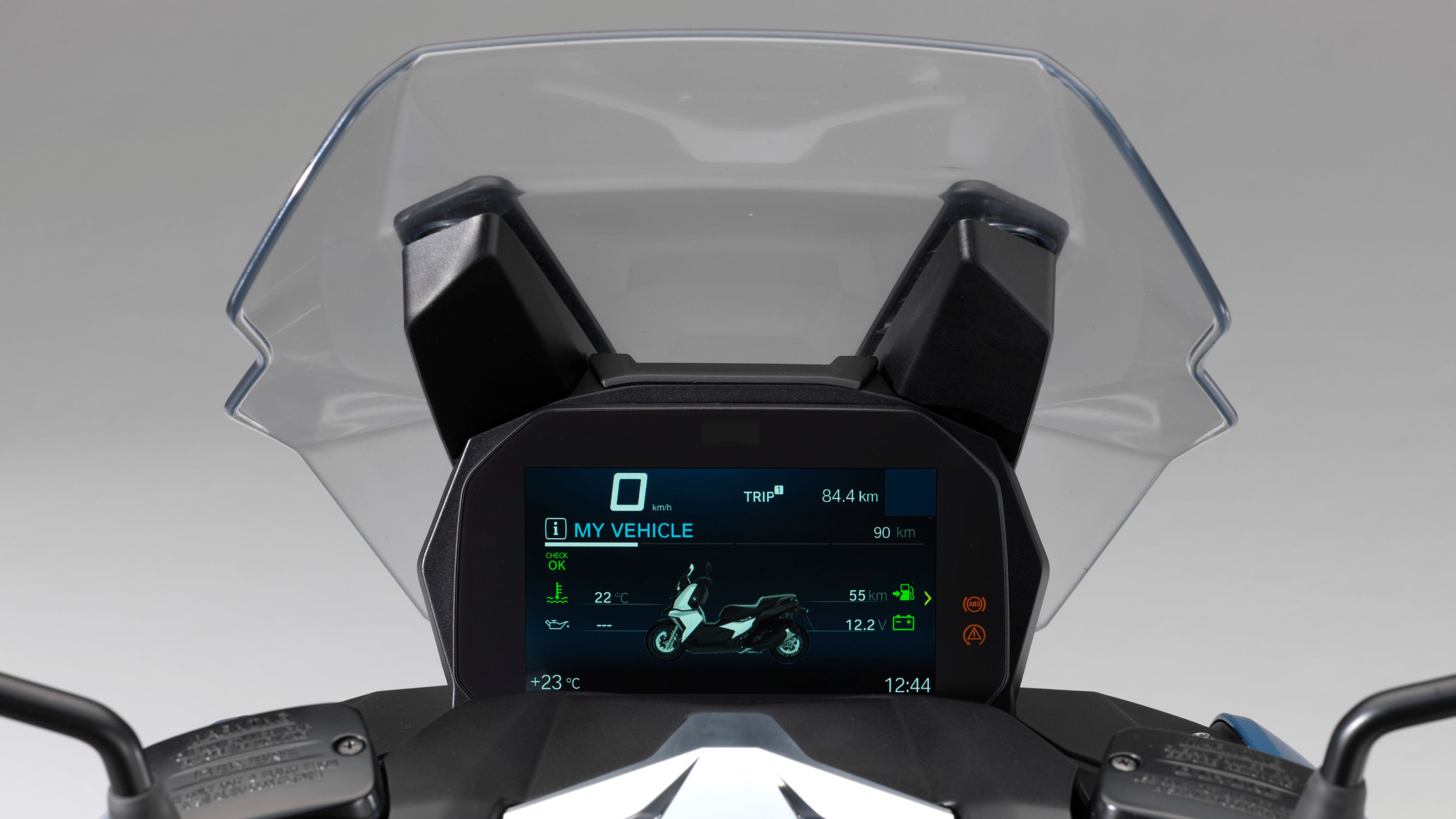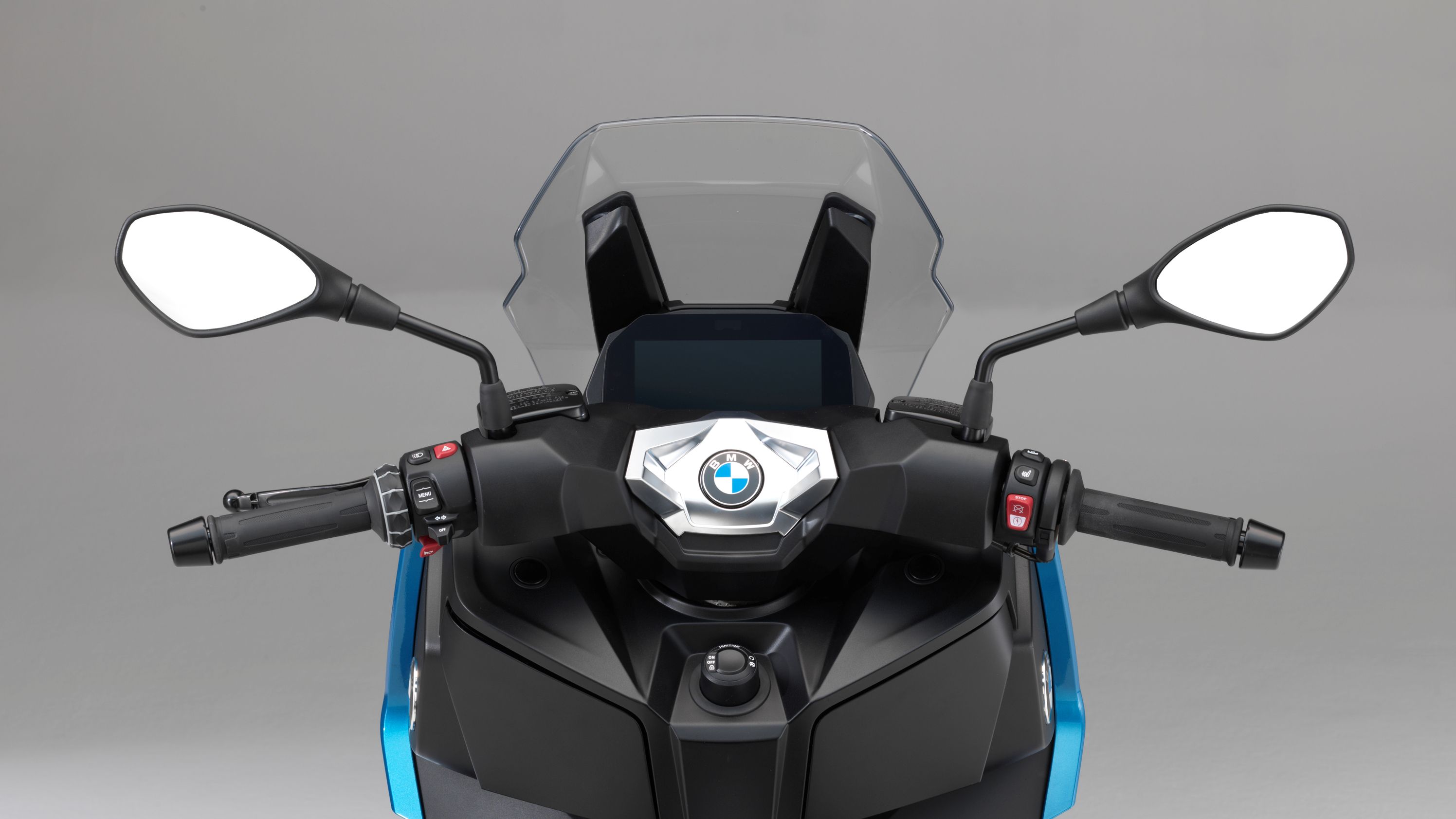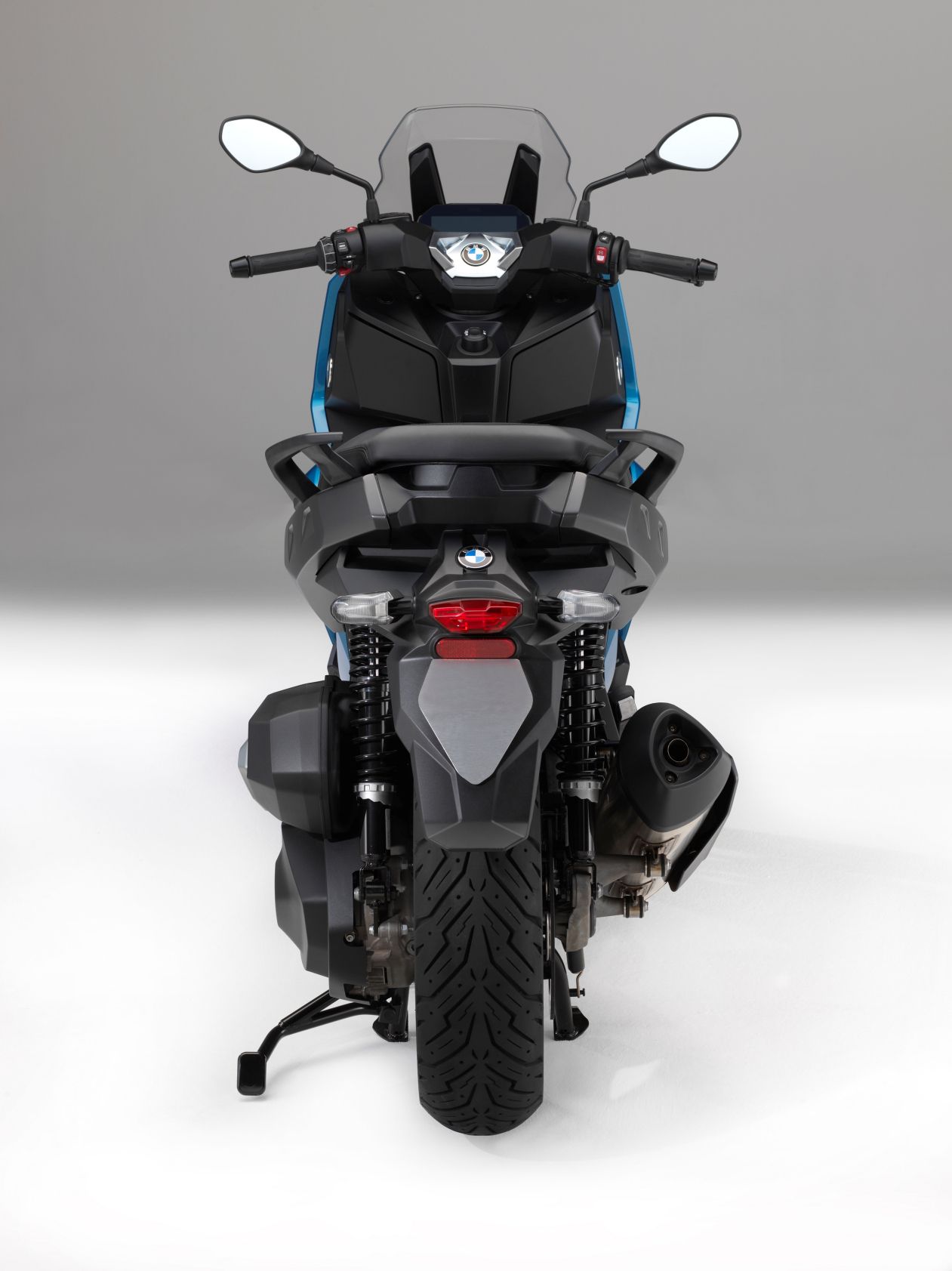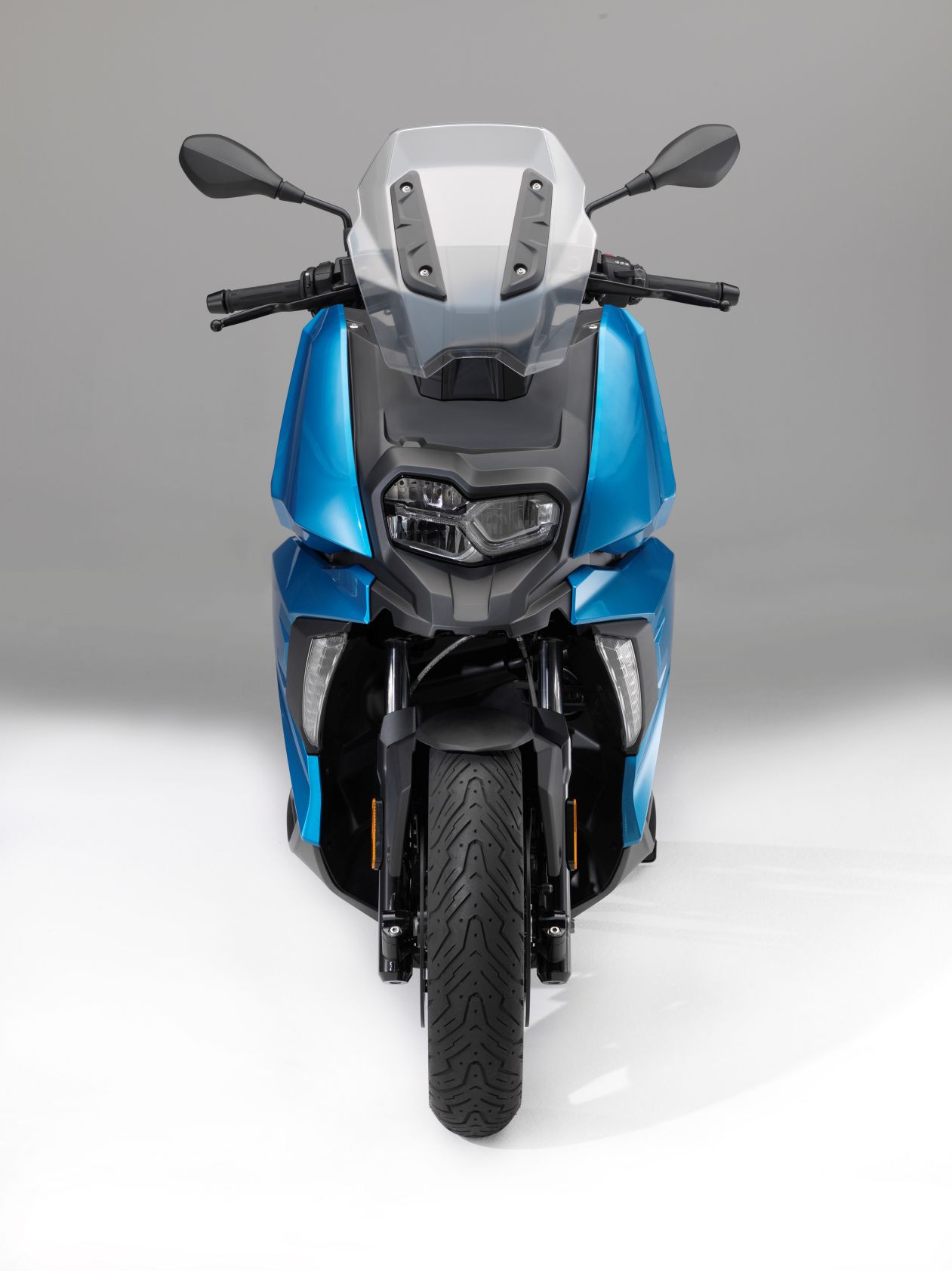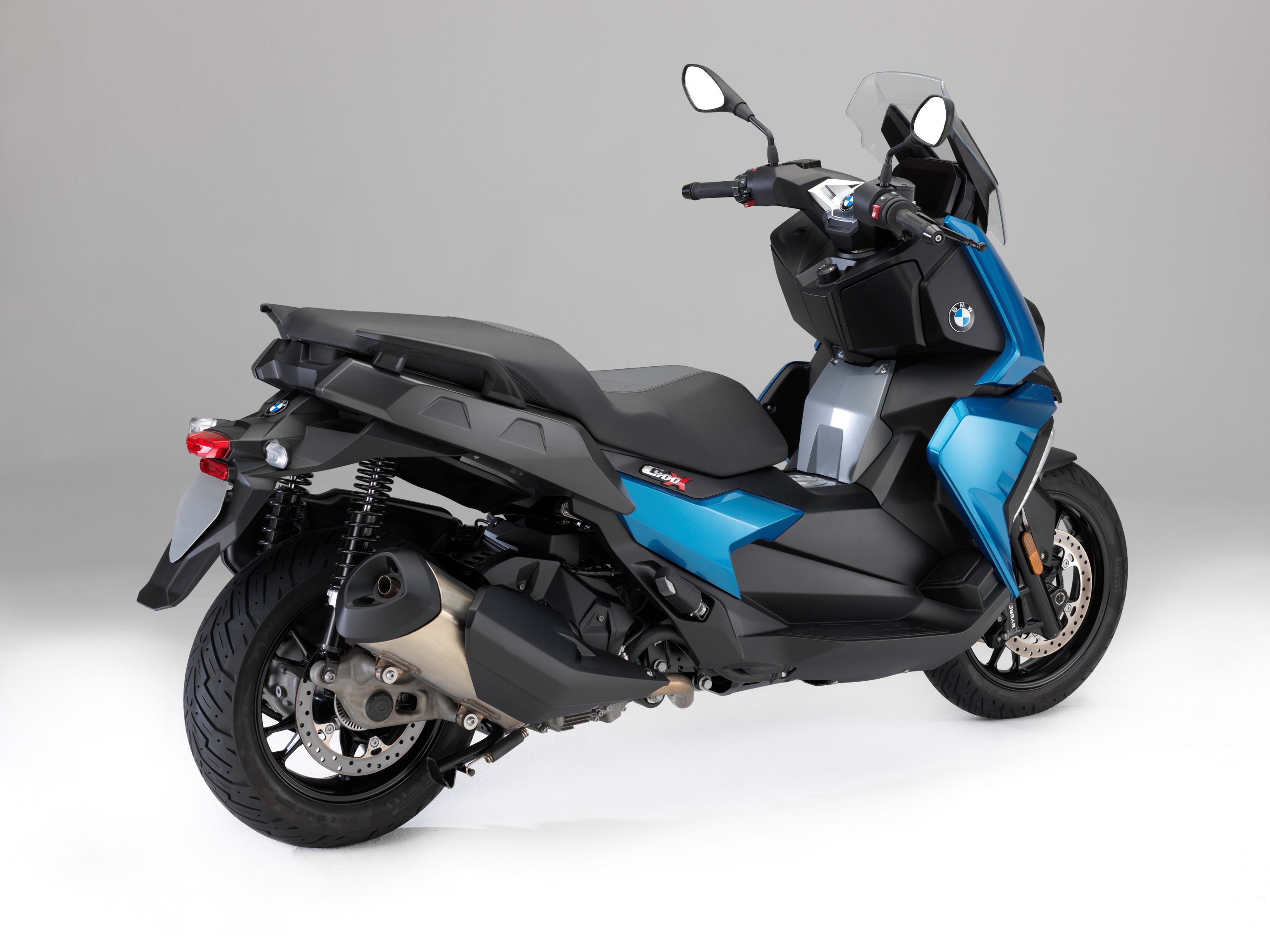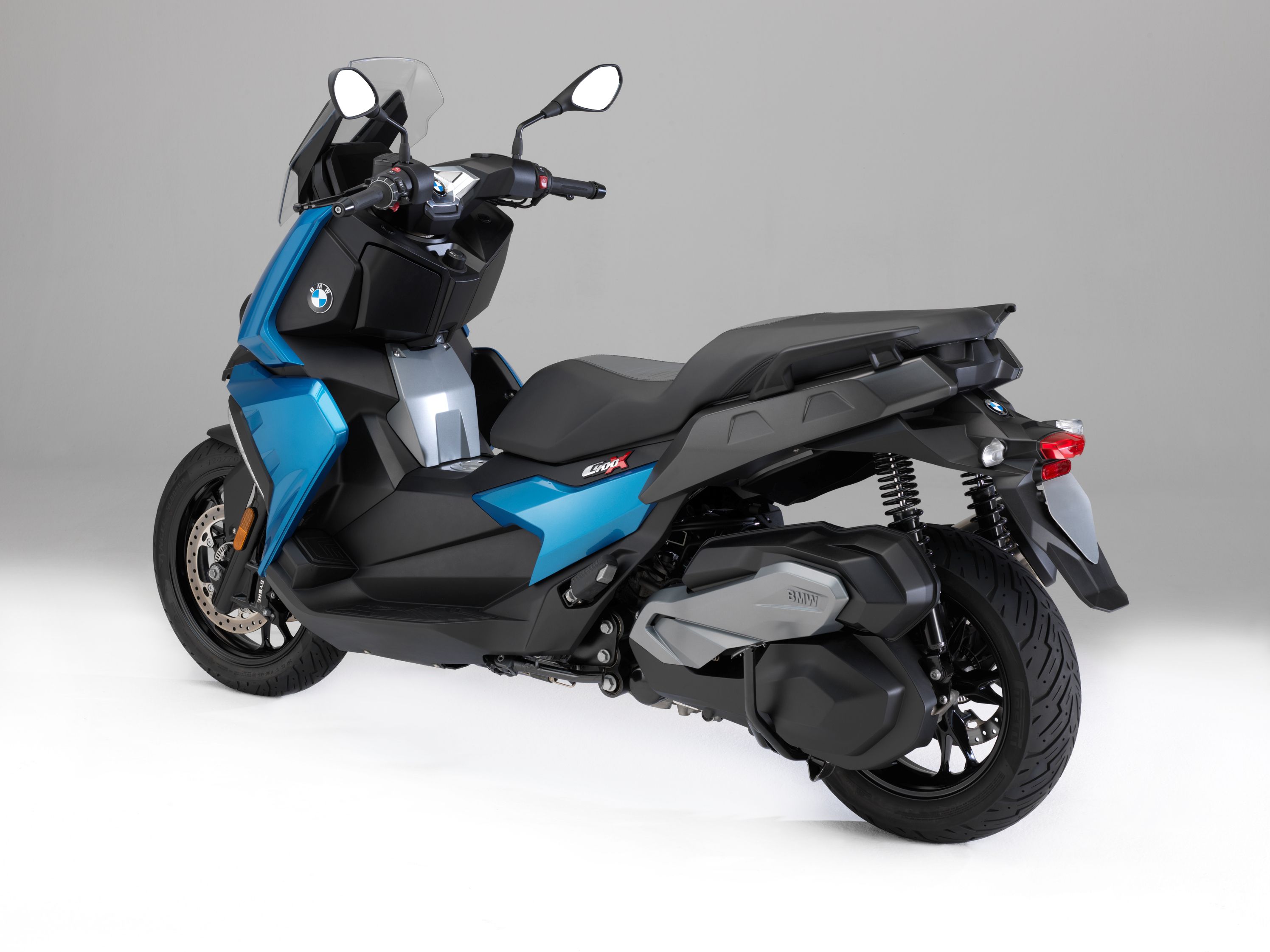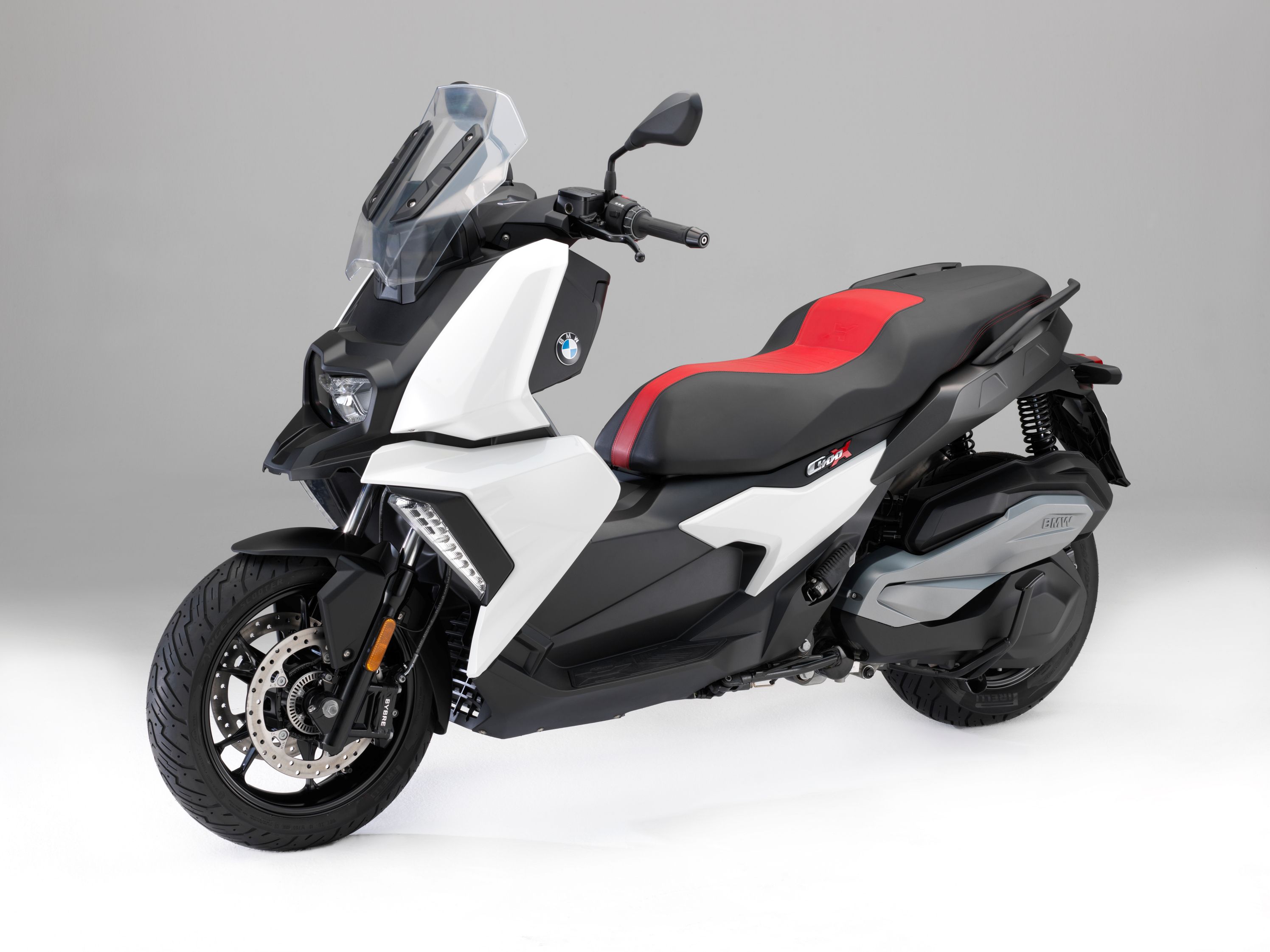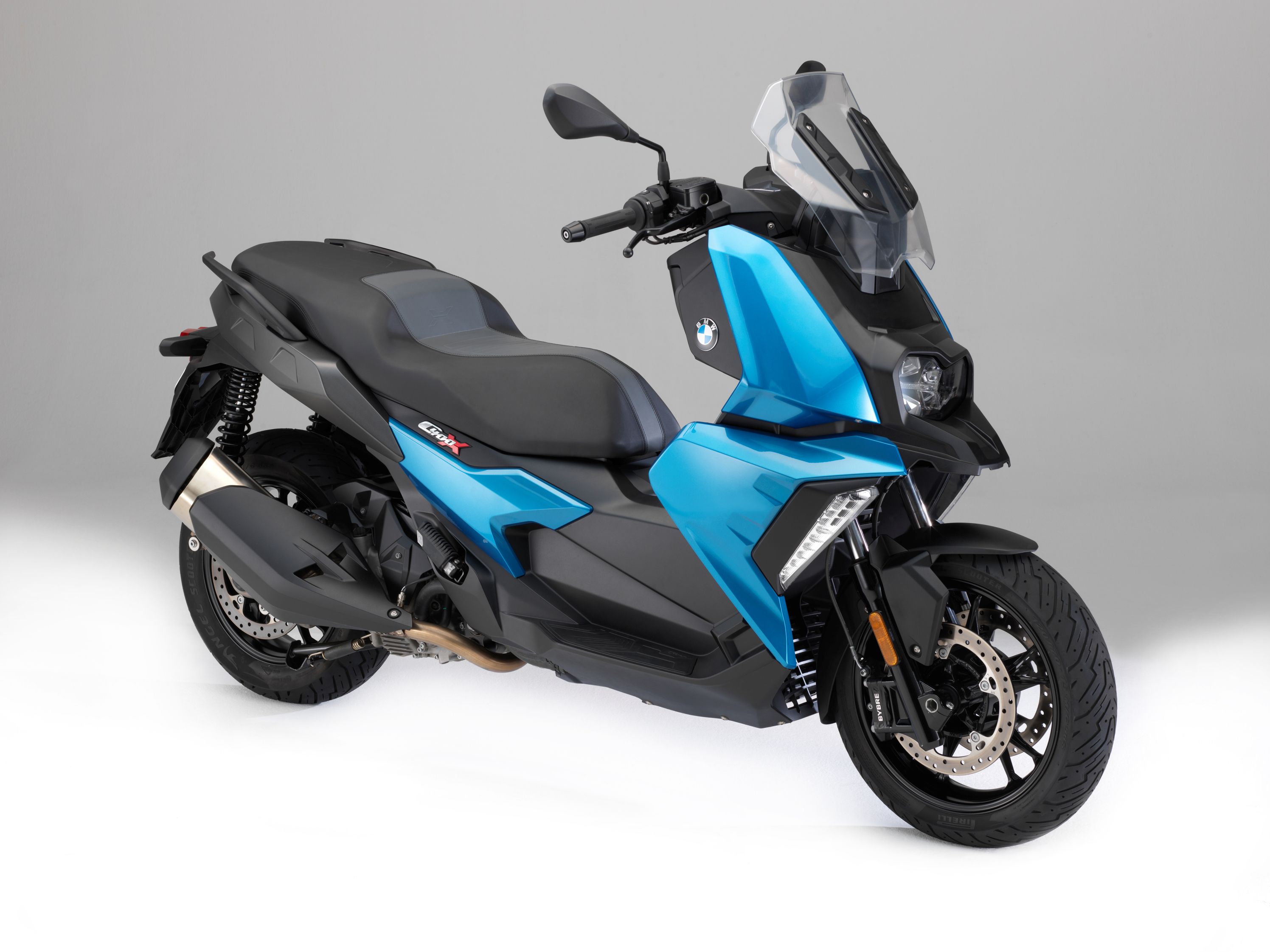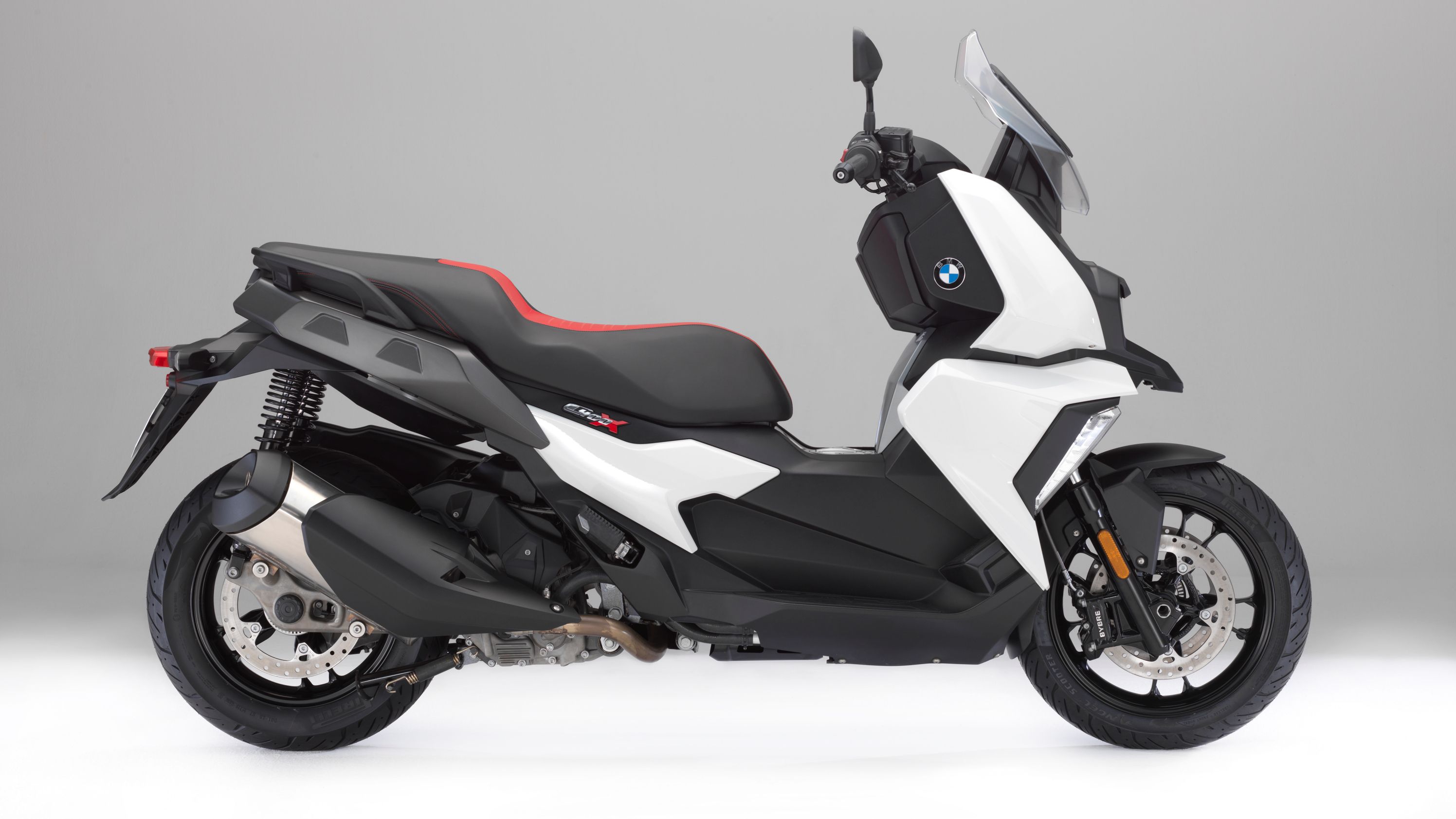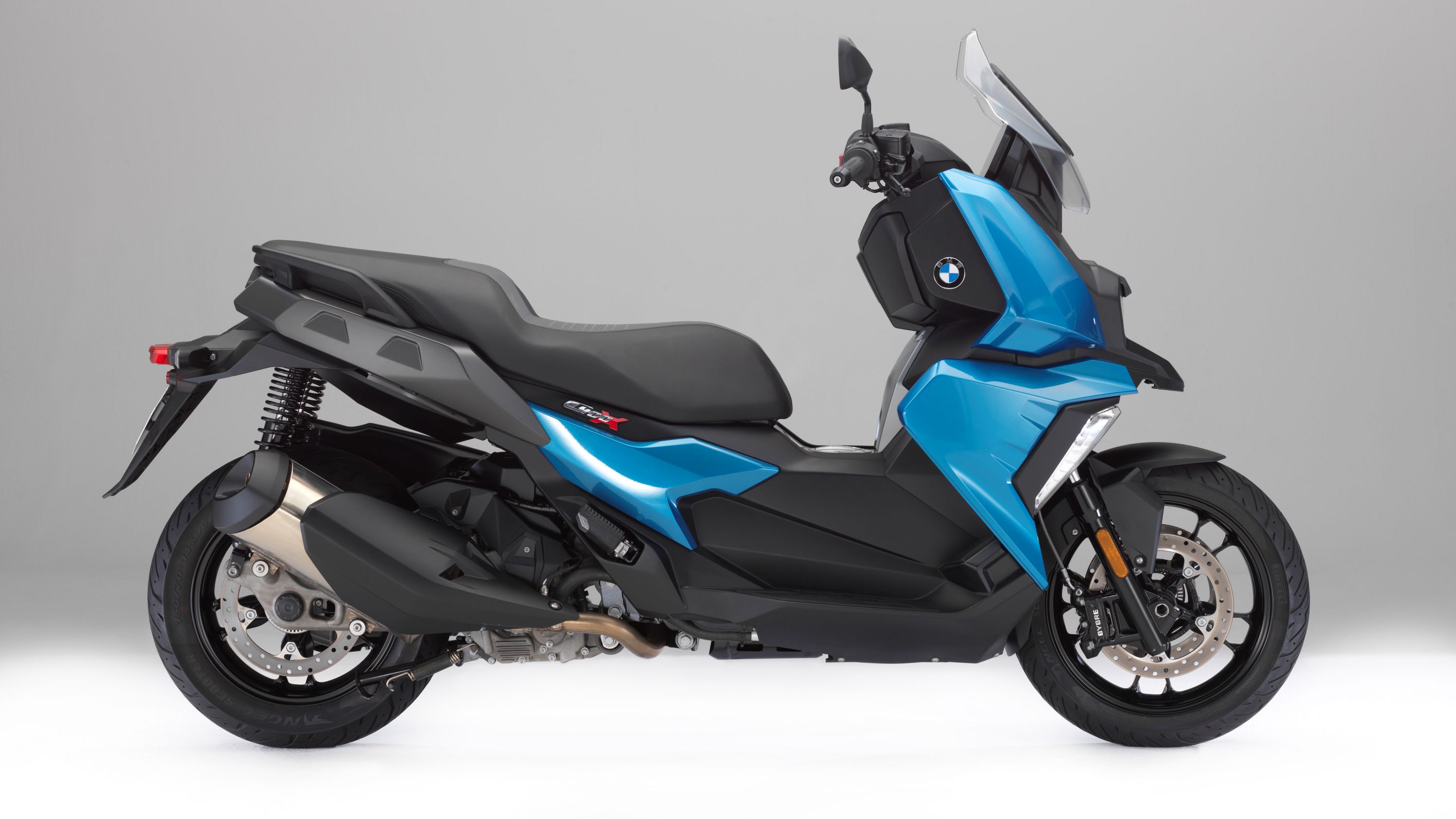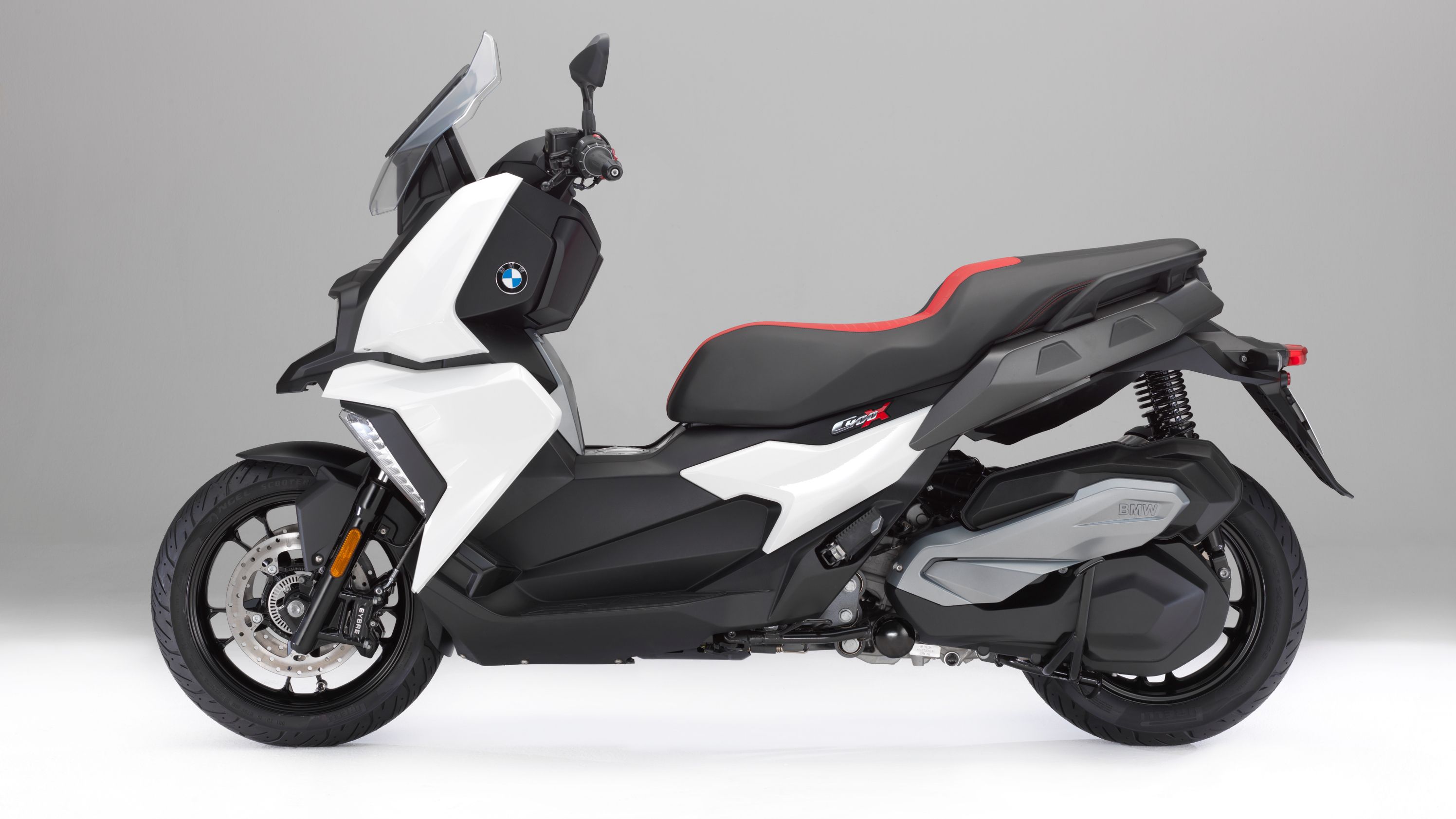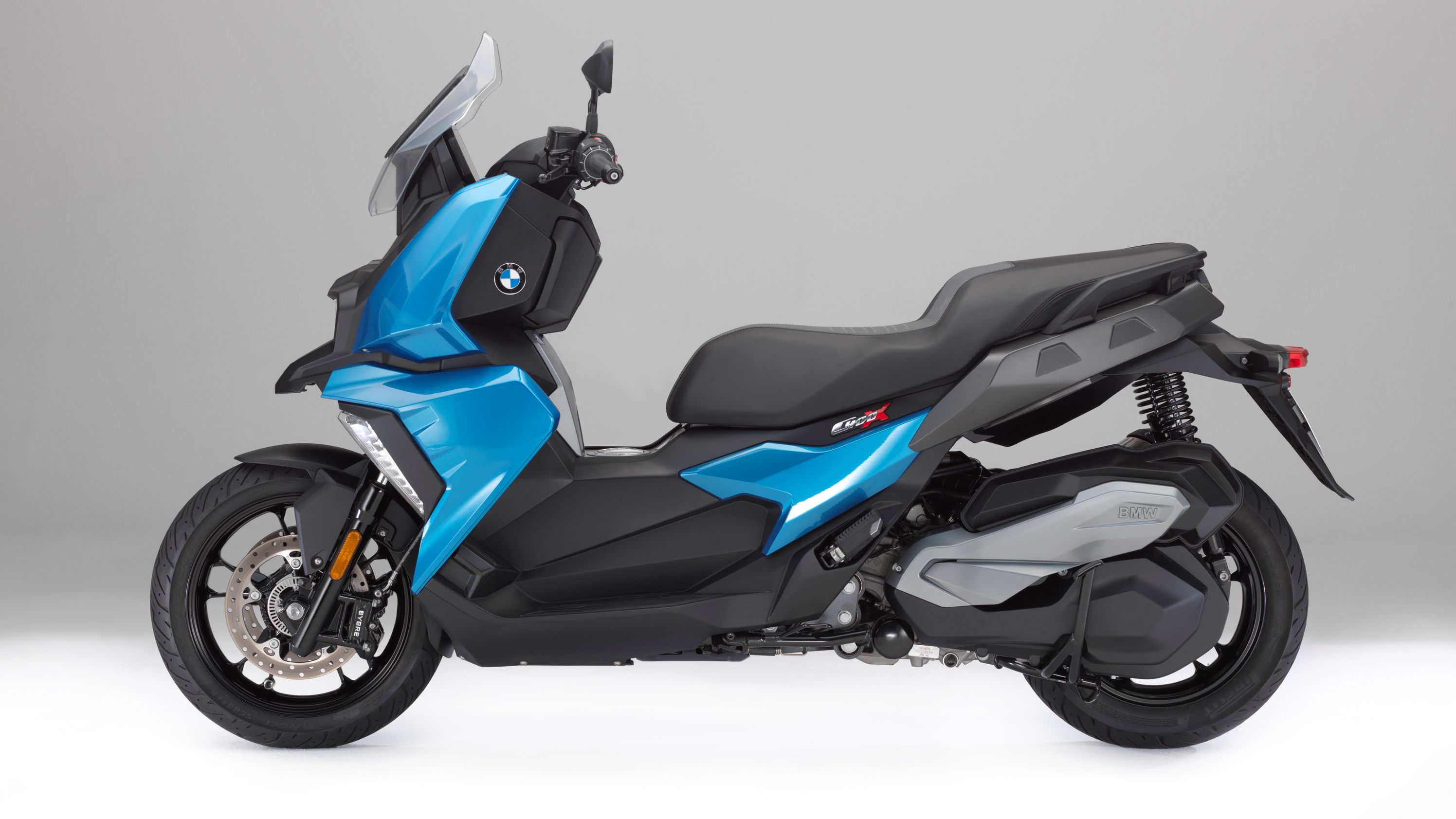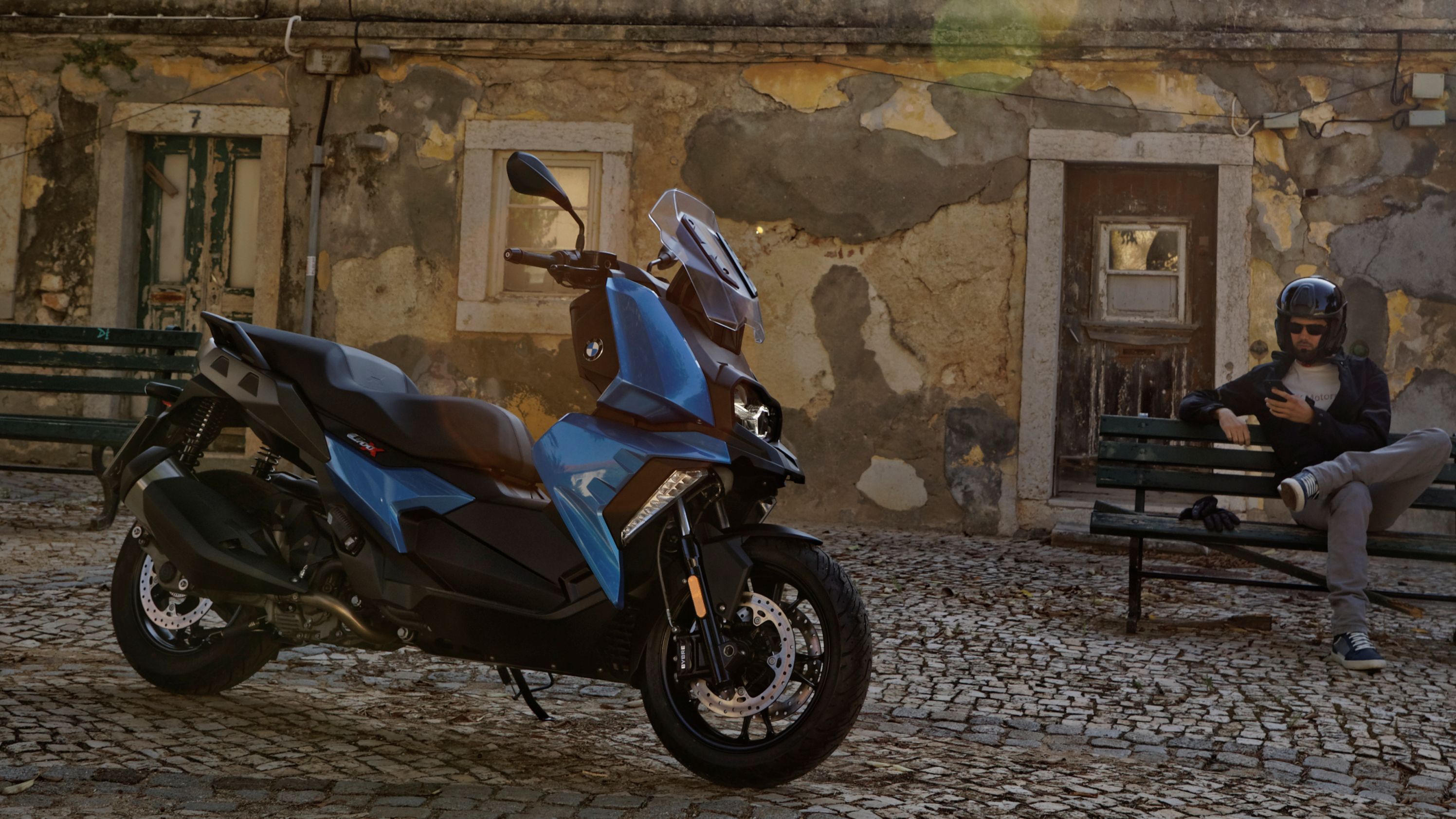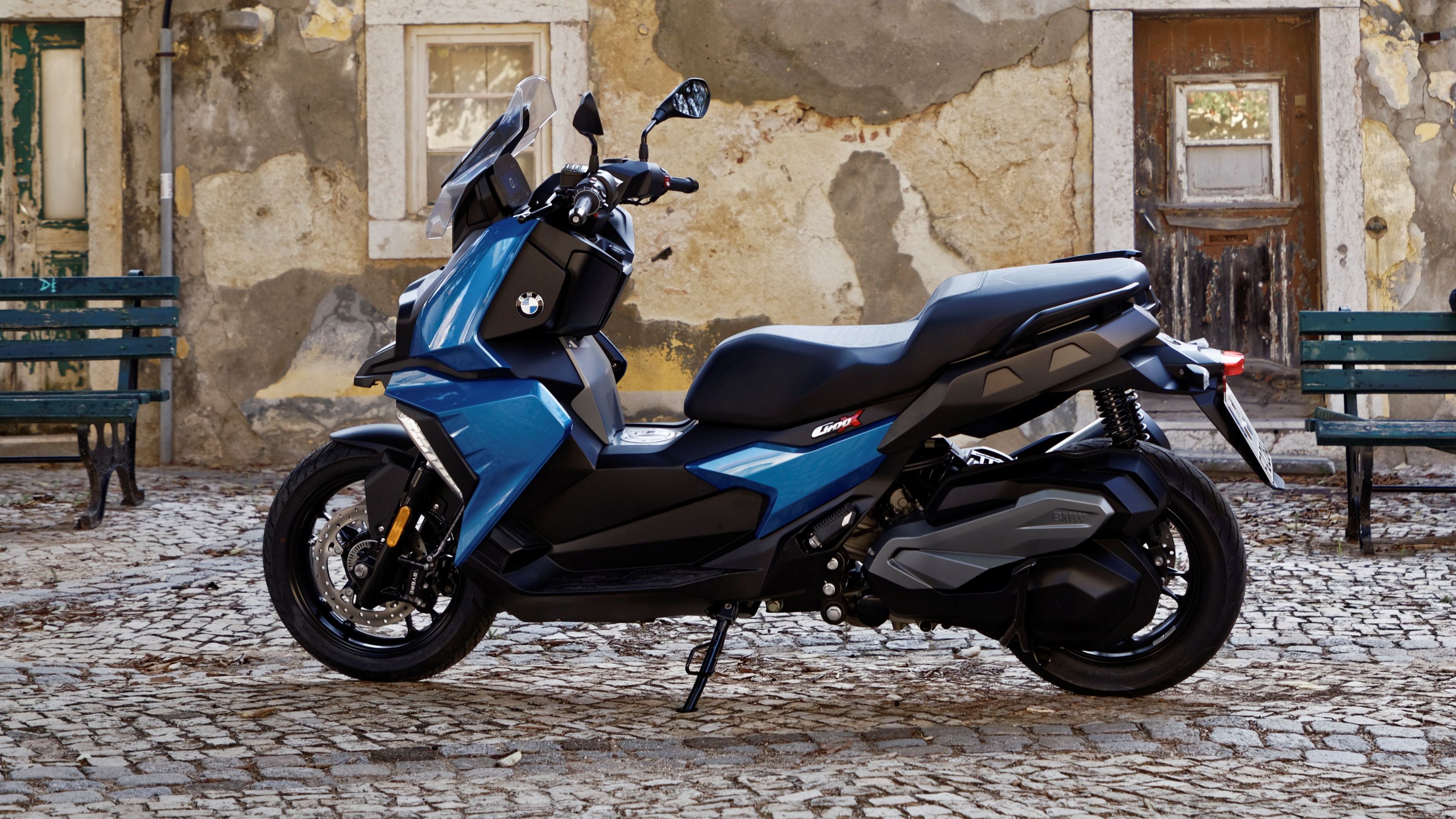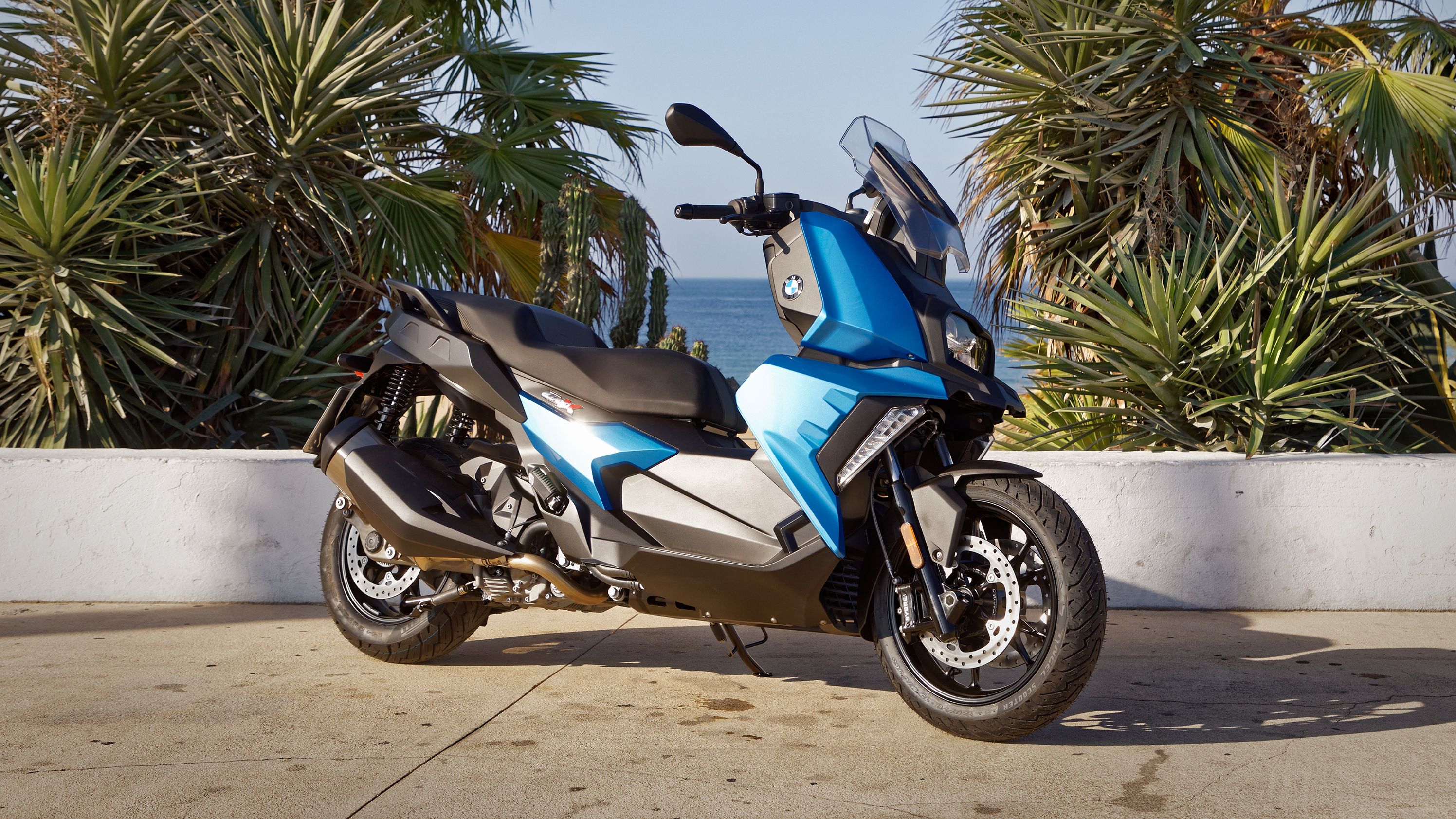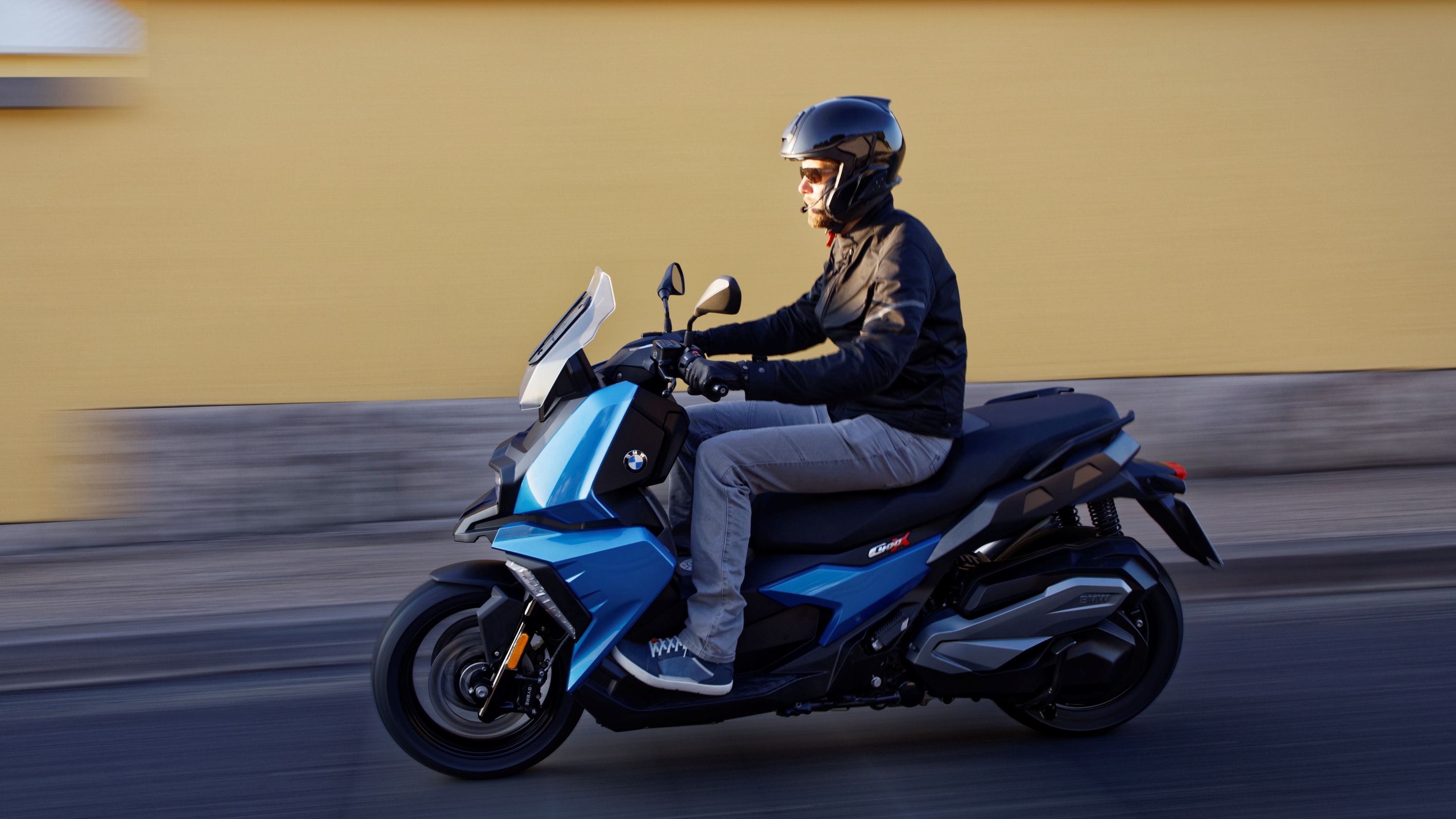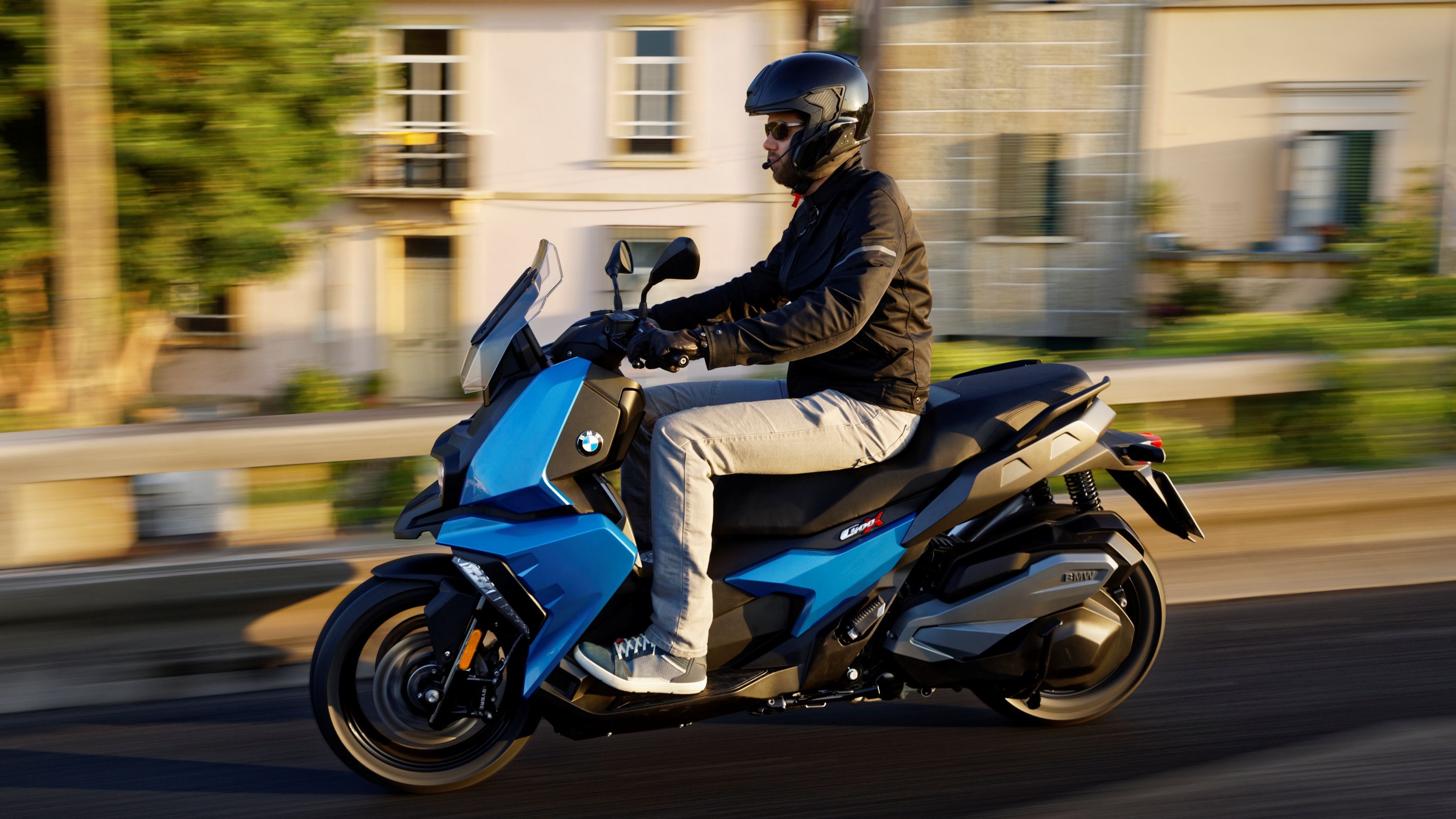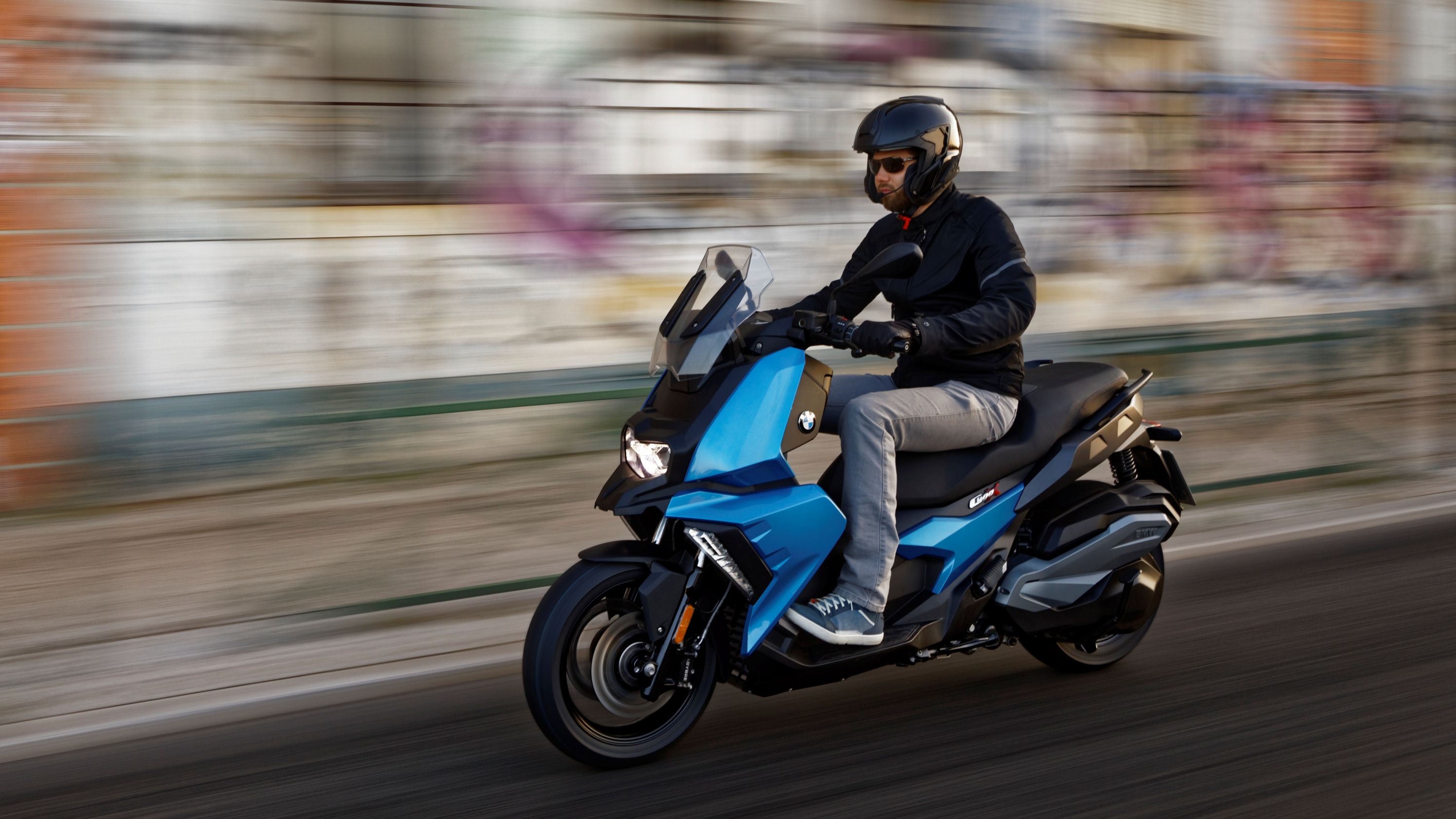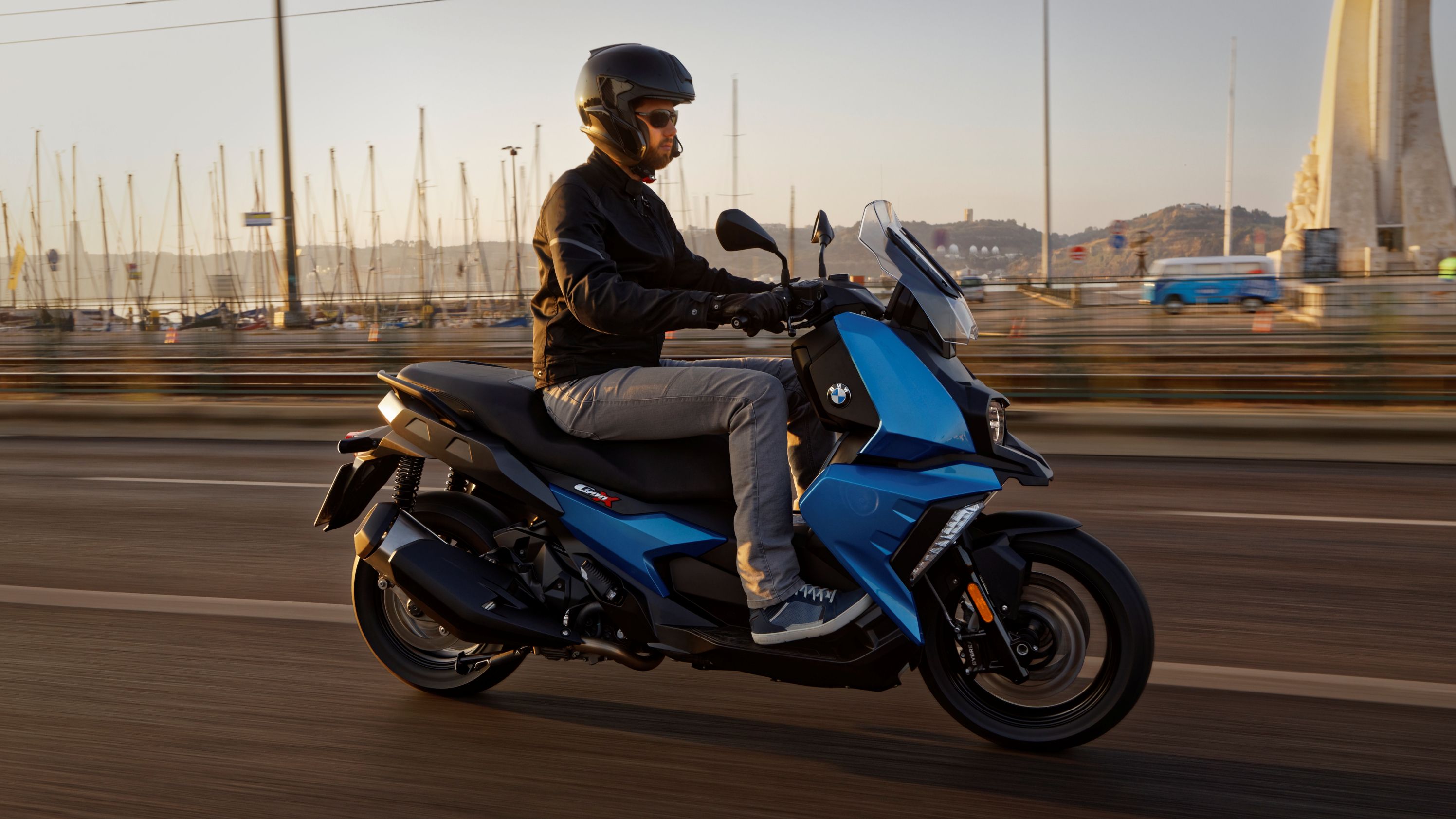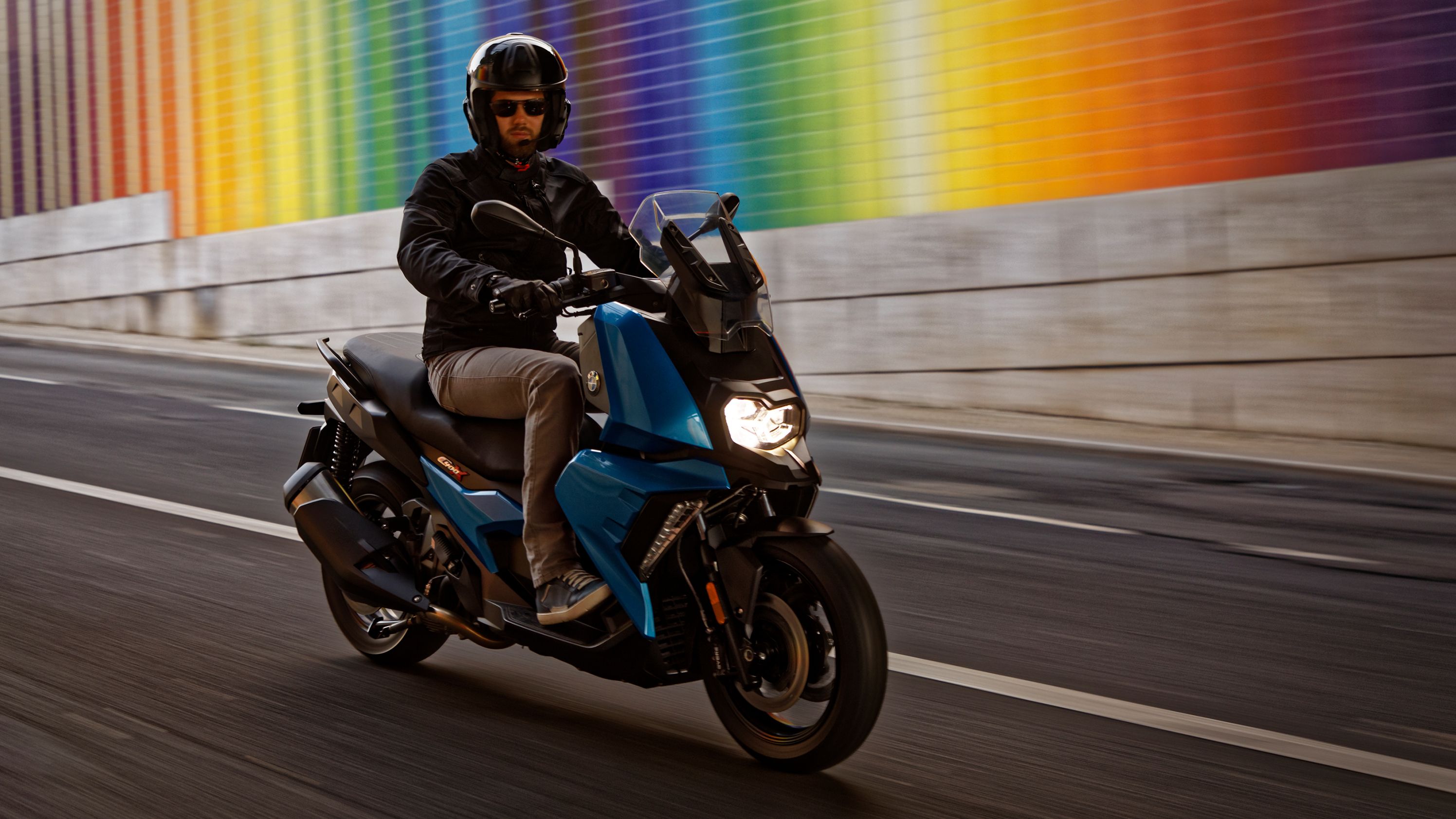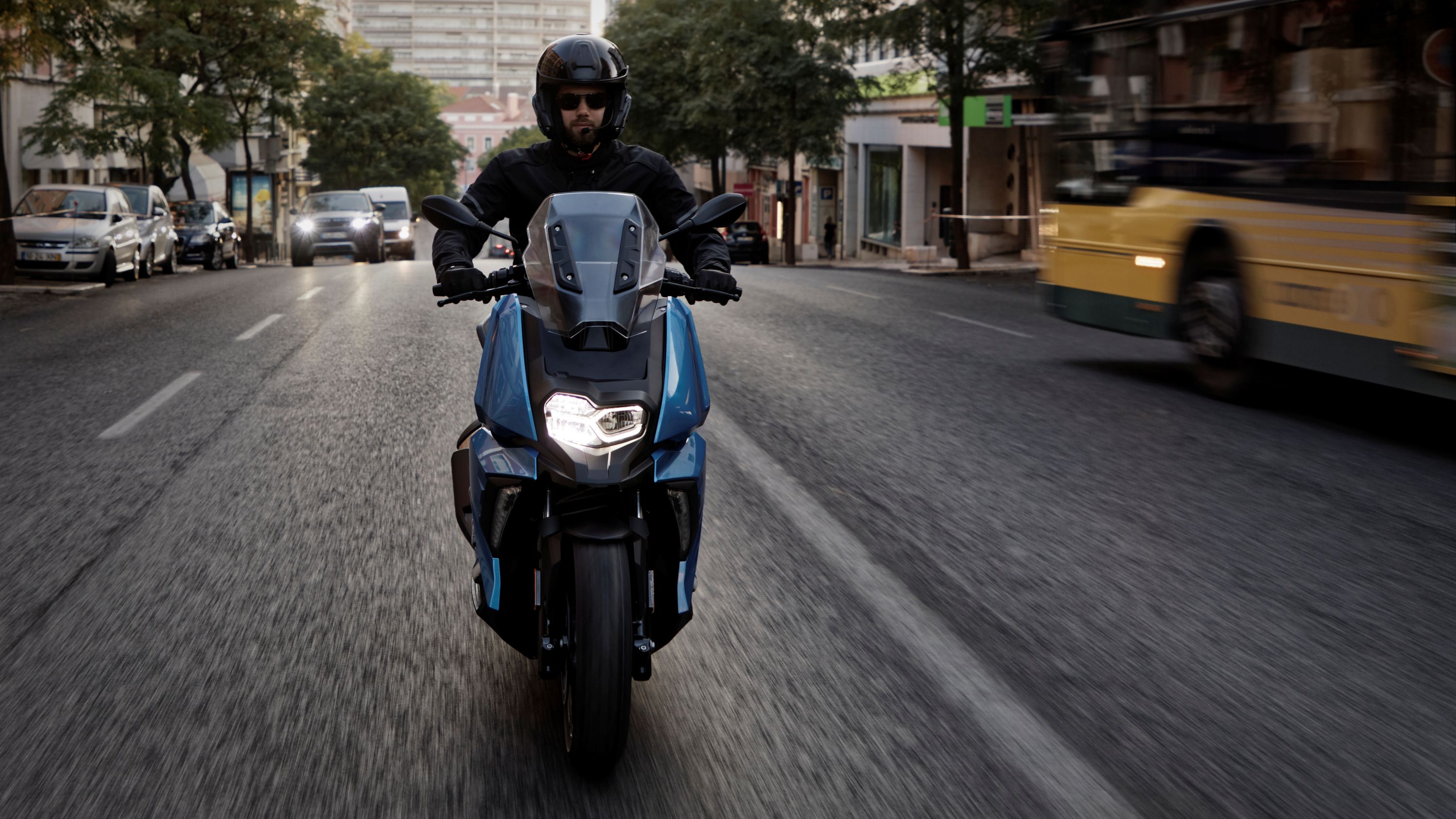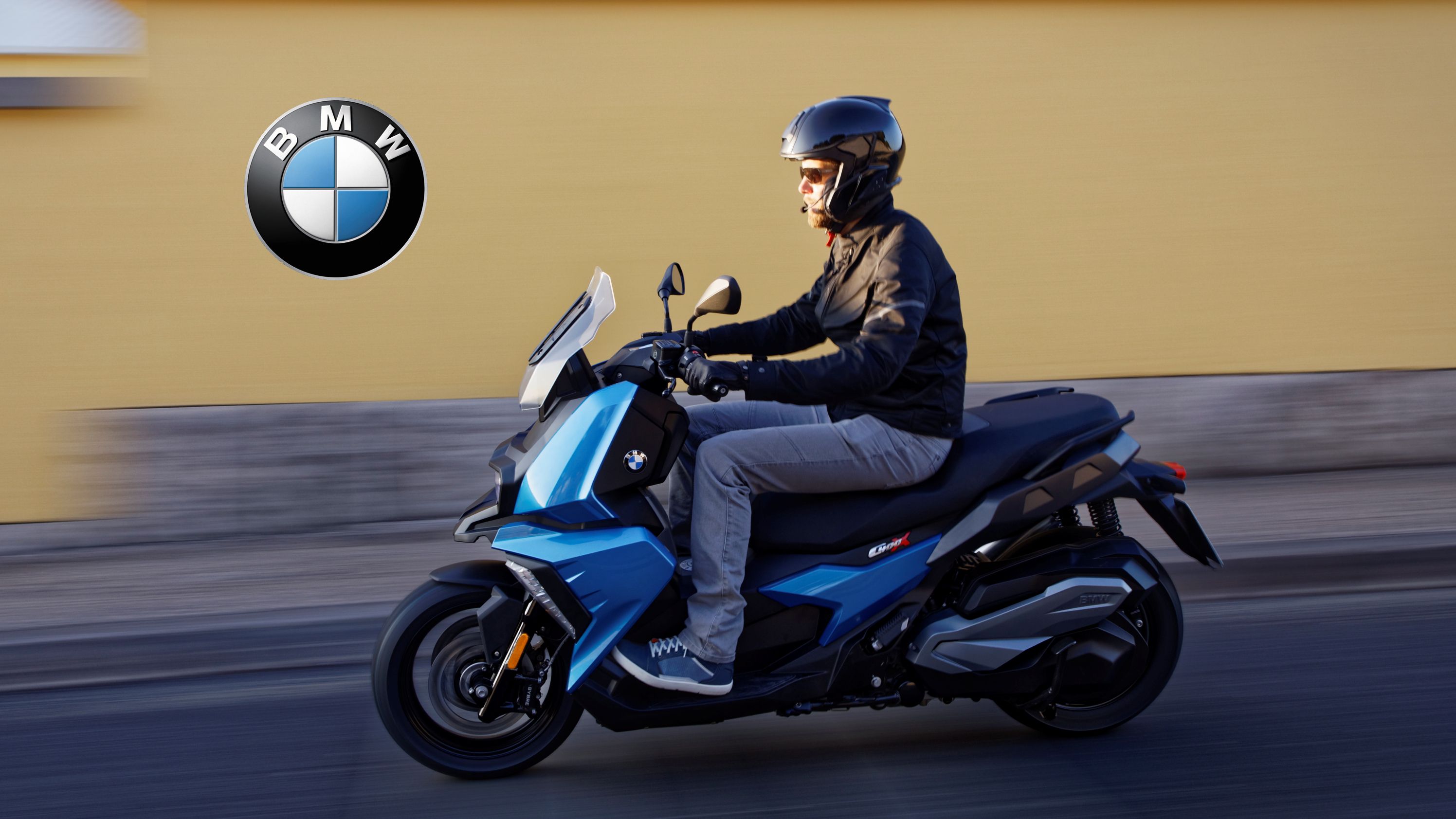BMW Motorrad turned us on to its newest mid-size scooter, the C 400 X, at the 2017 EICMA with an amply-powered thumper that handles highway speeds and turns in a very respectable 0-60 mph time; not bad at all for a genre made up mainly of rides more appropriate for putting around campus or retirement communities.
Continue reading for my review of the BMW C 400 X.
2018 - 2019 BMW C 400 X
- Make: Array
- Model: 2018 - 2019 BMW C 400 X
- Engine/Motor: single cylinder
- [do not use] Vehicle Model: Array
Design
Scooters can be sources of good, economical transportation, and quite a bit of fun to boot. While for some people, frightening themselves can also be a source of entertainment, the process of trying to compete with urban-artery and highway speeds can be downright terrifying on the majority of the scooters around the world. For that reason, the C 400 X looks to be a good fit for the American commuter since it seems like it can hold its own with the traffic and speeds we deal with over here.
Beemer makes even larger scoots, but the mid-range makes for a nice balance between price, power, and bulk. Having said that, this ride is not the typical Italian stallion that looks like it could fit in one of my saddlebags, but neither does it fall into the “probably should have bought a real motorcycle instead” category. Modern and kind of edgy, the “X” breaks up its painted sheet metal with wide areas of blackout that sort of interrupts the profile similar to how naval camouflage visually breaks up a ship, so the whole thing looks a little discombobulated to mine eyes.
The LED headlight comes recessed in the leading edge of the fairing with a vestigial bird's beak that does more for the look than it does to protect the rider from front-wheel fling, that job falls to the front fender proper. Above the light, a small windscreen protects the instrumentation and breaks the wind pressure off the rider's trunk, and it comes well vented to help reintegrate the slipstream for reduced head buffeting. Shoulders on the front fairing serve to throw the weather out and away from the rider's thighs as well, with a well-formed pocket for the feet and lower legs.
A rather deep tunnel dominates the step-through from the deck up to the bottom of the saddle, so mounting it won't be quite as easy as with some scoots and you lose the 'tween-feet storage. Good thing Beemer compensated for that with its Flexcase storage system that provides an expansion zone for the under-seat storage and can hold a pair of helmets when parked.
Fold-out footrests and a stadium pillion seat complete with JC handles sets the passenger up in comfort. Out back, a full-size mudguard/plateholder/taillight/turn-signal assembly finishes it off with plenty of fling protection at the rear wheel.
Chassis
Rather than relying on a stressed-skin monocoque design, the factory opted for a tubular-steel underframe with a cast-iron boss to stiffen and support the swing-mount pivot area. The pivot bearing itself comes designed so as to limit the engine vibration passed along to the frame, and by association, the pilot and passenger.
Hydraulic, 35 mm front forks support the front end with a rake angle of 26.4-degrees and 3.18 inches of trail, and that lends it the maneuverability you need to manage the generous 61.6 wheelbase. The swingarm itself is a dual-side unit with the usual engine/transmission assembly on one side, and a chill-cast aluminum member on the other. Dual, coil-over shocks buoy and tame the rear end and provide the obligatory spring-preload adjustment but little else, and suspension travel is reasonable for a scooter at 4.3 inches up front and 4.4 inches out back.
Tire size also encroaches on motorcycle territory, even if it doesn't quite make it with a 120/70-15 and 150/70-14 on the front and rear, respectively. Brakes are another story. Beemer chucked on dual 265 mm front discs with four-pot anchors and another disc of the same size out back with a single-piston caliper and a Continental MK 100 MAB 2-channel ABS unit on overwatch. That's some pretty serious braking ability, and it far exceeds many full-size bikes that weigh half-again as much.
|
Frame: |
Tubular spaceframe |
|
Front suspension/Travel: |
Telescopic fork, Ø 35 mm / 110 mm |
|
Rear suspension/Travel: |
Aluminum double-sided swing arm, double spring strut, adjustable spring preload / 112 mm |
|
Rake: |
26.4° |
|
Trail: |
3.2 inches |
|
Brakes front: |
Rigid twin disc brake, diameter 265 mm, 4-piston floating caliper |
|
Brakes rear: |
Rigid twin disc brake, diameter 265 mm, 1-piston floating caliper |
|
ABS: |
BMW Motorrad ABS |
|
Wheels: |
Die-cast aluminum wheels, Front:3.50 x 15", Rear: 4.25 x 14" |
|
Tires: |
front: 120/70 ZR15, rear: 150/70 ZR14 |
Drivetrain
Power comes from the 350 cc, water-cooled thumper with its horizontal 80 mm bore, 69.6 mm stroke and 11.5-to-1 compression ratio. In order to further reduce engine vibration, a counter-rotating balancer mitigates much of the vibration, and a rubber engine mount provides one final layer of isolation to keep the vibrations where they belong.
An OHC times the four-valve head with 32.5 mm intake poppets and 27.2 mm exhaust valves that open up the cylinder to really let it breathe. This engine has a certain amount of self-regulatory capabilities, not unlike Suzuki's DTV system in spirit, if not in operation. The electronic system monitors atmospheric conditions along with throttle position and temperatures to fine tune the fuel delivery and time the spark to deliver optimal performance. Gotta love those Bavarians, they're so meticulous.
It cranks out 34 horsepower at 7,500 rpm with 25 pounds o' grunt that comes on at six grand, and as you might expect, that power filters through the belt-style CVT gearbox for twist-and-go functionality with a dry centrifugal clutch to couple the tranny to engine power. Considering it clocks 0-to-60 in 9.5 seconds, that's not bad for a scooter.
|
Engine: |
Water-cooled single-cylinder 4-stroke in-line engine, four valves per cylinder with rocker arm, overhead camshaft, wet sump lubrication |
|
Displacement: |
350 cc |
|
Bore/stroke: |
80/69.6 mm |
|
Output: |
34 hp at 7,500 rpm |
|
Torque: |
25.8 lb-ft at 6,000 rpm |
|
Compression: |
11.5/1 |
|
Valve control: |
OHC (overhead camshaft) |
|
Carburetion: |
Electronic injection BMS-E2 |
|
Clutch: |
Centrifugal force dry clutch |
|
Gearbox: |
Continuously variable CVT belt transmission |
|
Secondary drive: |
Gear reduction cog wheel pairing |
Pricing
BMW isn't tossing around MSRP for the C 400 X. The larger maxi-scooters in the "C" stable start at $10k so figure something less than that. For 2019, you can add Black Storm metallic to the color palette.
Competitors
When I consider top-shelf, non-BMW scooters that wouldn't be an immediate risk to life and limb on the interstate, my mind goes straight to Suzuki's Burgman line. Just take a look at the Burgman 400 ABS, reintroduced for the 2018 MY, and I should think you'd agree. The Burgman carries itself with a less disjointed panache; not because of a lack of angular features, but simply because of greater continuity of color especially up front.
Dual headlights lead the way in the wide front fairing with a slightly more substantial vented windscreen to protect the rider's trunk. Leg protection seems comparable, as does the partially-blocked step-through though Suzuki gives us a break with a bit more room in the step-through that should make for easier mounting and dismounting. Both carry an impressive rise to the stadium pillion seat with white-knuckle bars, and have a rather cosmopolitan air about them.
Suzuki runs with hydraulically-dampened front forks, but opts for a single rear shock instead of a brace of them like on the Beemer. Although Suzuki backed off on the rear suspension, it didn't hold back on the front brakes and threw on a pair of 260 mm discs up front with a slightly-smaller 210 mm disc out back and runs with ABS protection as part of the standard equipment package. Pretty substantial, even if it does surrender a few millimeters here and there.
Suzuki shoehorns in a few more cubes with a 399 cc powerplant that still falls short of the Beemer. It delivers 30.5 horsepower with a lower compression ratio of 10.6-to-1 (which may explain the power drop) with a top speed around 95 mph (if you dare). Suzuki lacks some of the spit-and-polish of the BMW engine with nothing like the self-regulating feature we found on the “X,” but Suzuki's Idle-Speed Control does at least provide easy starts and stable low-rpm operation regardless of temperature.
Until I see some money numbers on the C 400X, I won't be 100-percent certain on this next bit, but at $8,099, I reckon the Burgman 400 is sitting somewhere around a grand lower on the price scale than the BMW. I'm sure we'll see soon enough if I'm right or not.
He Said
"I won't lie; the angular nature of the X is a little off-putting. It could be less so with a more monochromatic color scheme, but instead here we are. Once I move past that, however, I gotta' say I like what I see. The storage space, braking power and top speed make it suitable for use on our road system, and it would make a dandy commuter, says I.”
She Said
My wife and fellow motorcycle writer, Allyn Hinton, says, "I gotta admit, I'd rather have a 400 cc scooter than something less nowadays. Back when I was bopping around a college campus, a smaller scooter would have been fine, but I need something bigger to get anywhere near a highway. That said, this new BMW scooter looks promising. I'm glad to see BMW offer something in this mid-range."
Specifications
|
Engine & Drivetrain: |
|
|
Engine: |
Water-cooled single-cylinder 4-stroke in-line engine, four valves per cylinder with rocker arm, overhead camshaft, wet sump lubrication |
|
Displacement: |
350 cc |
|
Bore/stroke: |
80/69.6 mm |
|
Output: |
34 hp at 7,500 rpm |
|
Torque: |
25.8 lb-ft at 6,000 rpm |
|
Compression: |
11.5/1 |
|
Valve control: |
OHC (overhead camshaft) |
|
Throttle valve diameter: |
40 mm |
|
Carburetion: |
Electronic injection BMS-E2 |
|
Clutch: |
Centrifugal force dry clutch |
|
Gearbox: |
Continuously variable CVT belt transmission |
|
Secondary drive: |
Gear reduction cog wheel pairing |
|
Electrical system: |
|
|
Alternator: |
316W |
|
Battery: |
12/9 V/Ah |
|
Headlight: |
High beam/low beam: LED |
|
Rear light: |
LED brake light/rear light |
|
Starter: |
500 kW |
|
Chassis: |
|
|
Frame: |
Tubular spaceframe |
|
Front suspension: |
Telescopic fork, Ø 35 mm |
|
Rear suspension: |
Aluminum double-sided swing arm, double spring strut, adjustable spring preload |
|
Spring travel, front/rear: |
110/112 mm |
|
Rake: |
26.4° |
|
Trail: |
3.2 inches |
|
Brakes front: |
Rigid twin disc brake, diameter 265 mm, 4-piston floating caliper |
|
Brakes rear: |
Rigid twin disc brake, diameter 265 mm, 1-piston floating caliper |
|
ABS: |
BMW Motorrad ABS |
|
Wheels: |
Die-cast aluminum wheels |
|
Front Wheel: |
3.50 x 15" |
|
Rear Wheel: |
4.25 x 14" |
|
Tires: |
front: 120/70 ZR15, rear: 150/70 ZR14 |
|
Dimensions & Capacities: |
|
|
Total length: |
87 inches |
|
Total width: |
32.8 inches |
|
Wheelbase: |
61.6 inches |
|
Seat height (without rider): |
30.5 inches |
|
Inside leg length: |
69.3 inches |
|
DIN unladen weight, road ready: |
450 pounds |
|
Permitted total weight: |
893 pounds |
|
Fuel tank capacity: |
3.4 gallons |
|
Reserve: |
1 gallon |
|
Fuel consumption: |
67 mpg |
|
Acceleration: |
0-50: 3.1s, 0-100: 9.5s |
|
Top speed: |
86.4 mph |
|
Details: |
|
|
Colors: |
Zenith Blue Metallic, Alpine White, Black Storm Metallic |
References
Suzuki Burgman 400
See our review of the Suzuki Burgman 400.


